Water in the Desert
13 Mar 2025
We journeyed east for many miles, crossing 6500 total miles driven on the trip. We arrived at the award winning rest
area of 1992 outside Las Cruces. It had a great view of the city, and an awesome RoadRunner statue.
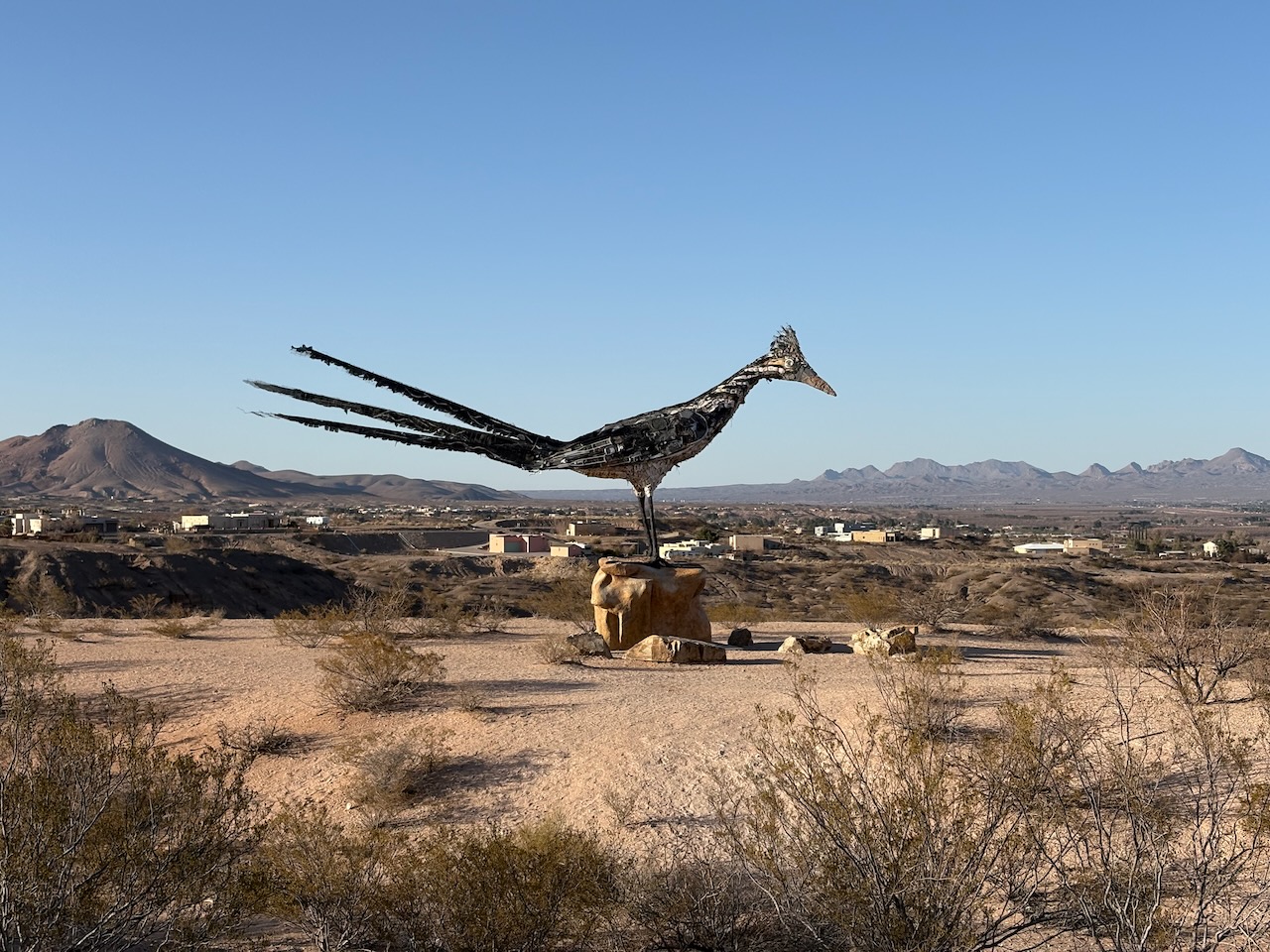
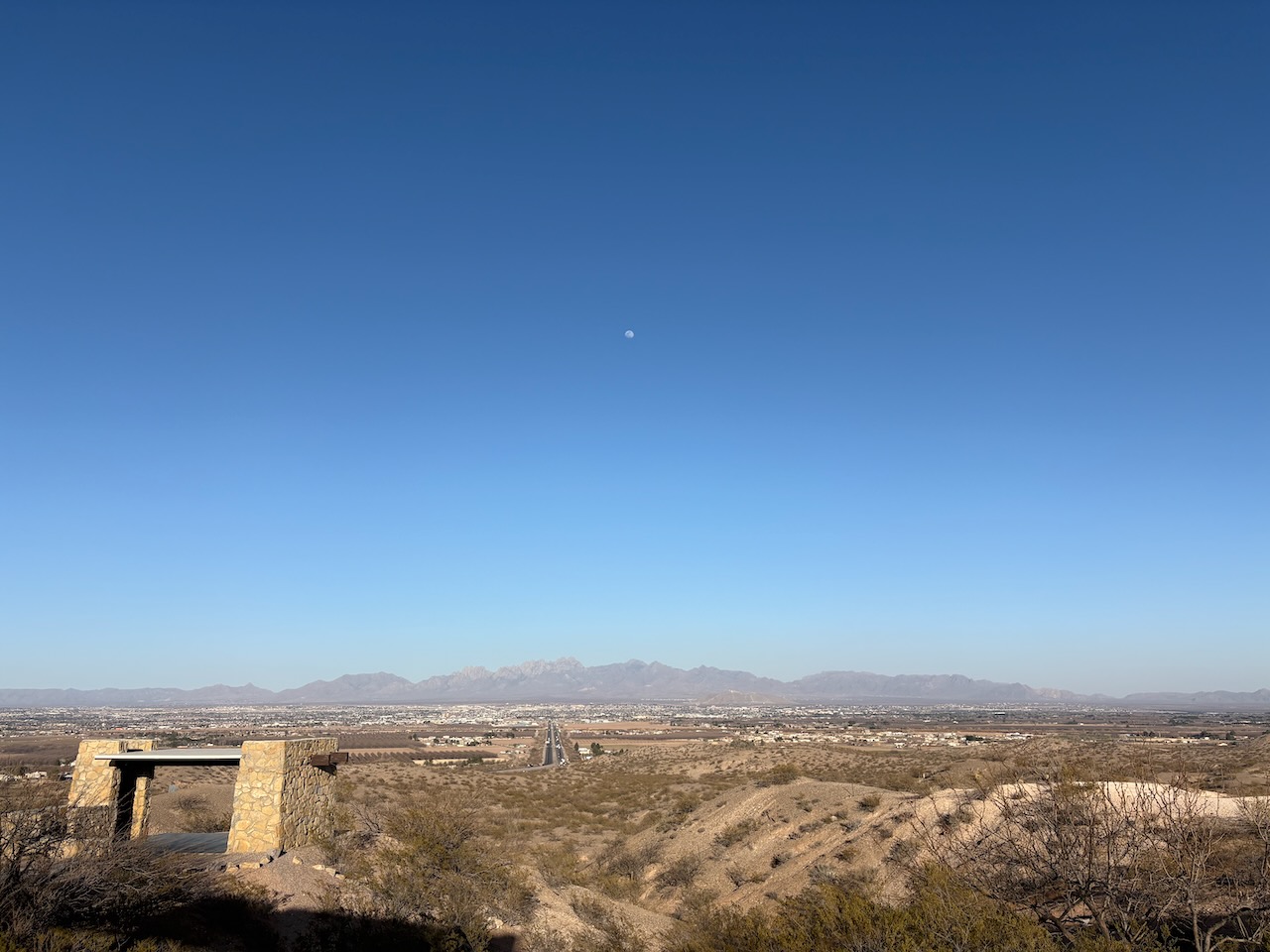
From there, we continued on to White Sands, passing through the White Sands Missle Range.
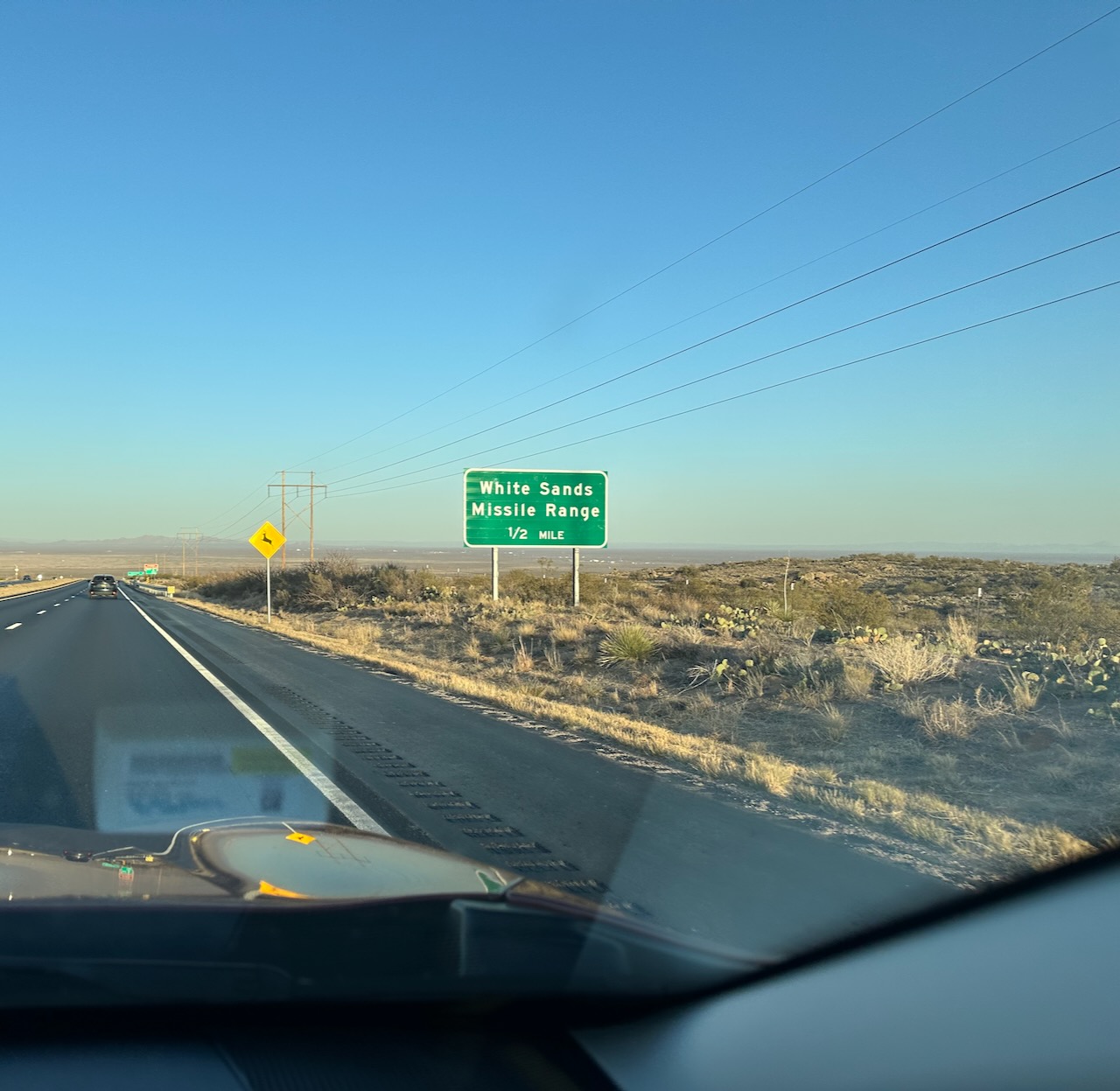
We even caught a couple fighter jets taking off from Holloman Air Force Base!
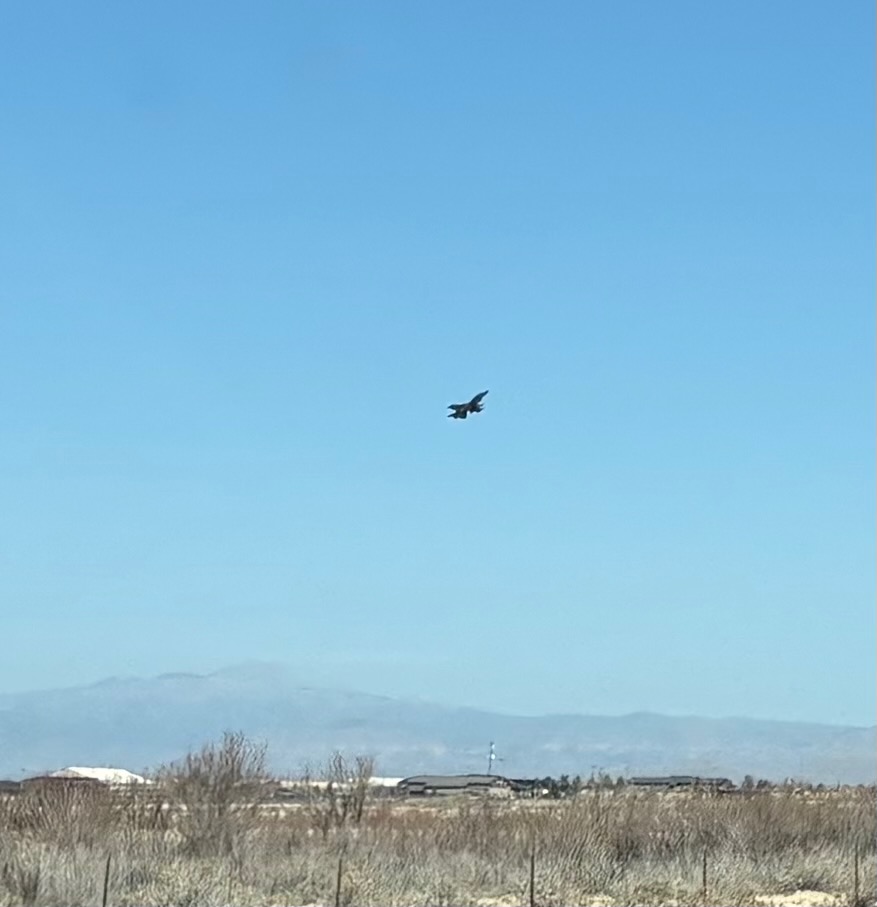
Welcome to White Sands National Park!
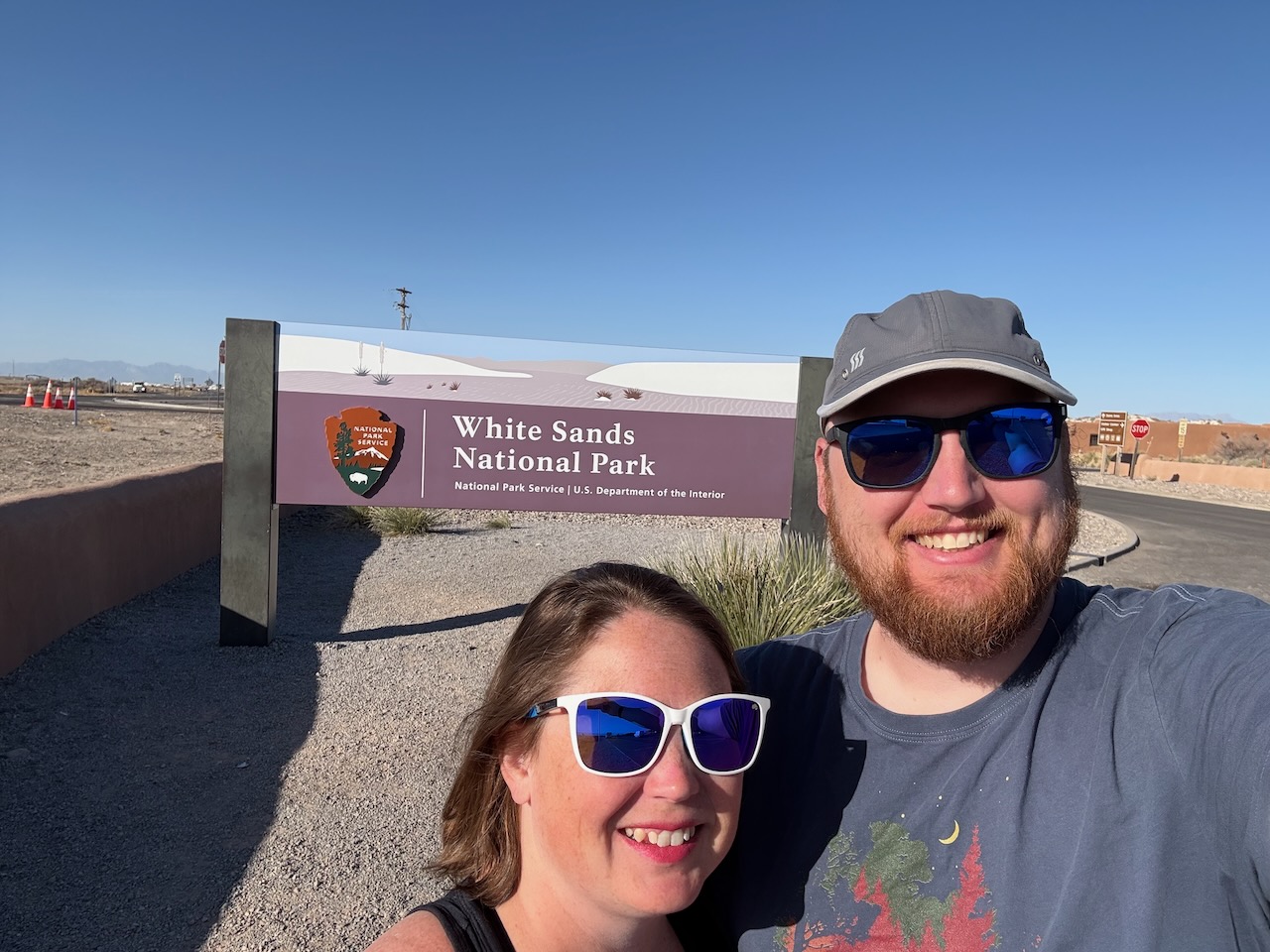
White Sands encompasses a unique geological area between the San Andres and Sacramento Mountains. The mountains are
rich in Gypsum, a white mineral. The rains fall on the mountains, dissolving the rocks over millenia, which then
collects in the basin and dries out in the desert climate. Finally, the wind blows against the deposits and breaks
them down to tiny grains of sand which collect in great dunes up to 60 feet high.
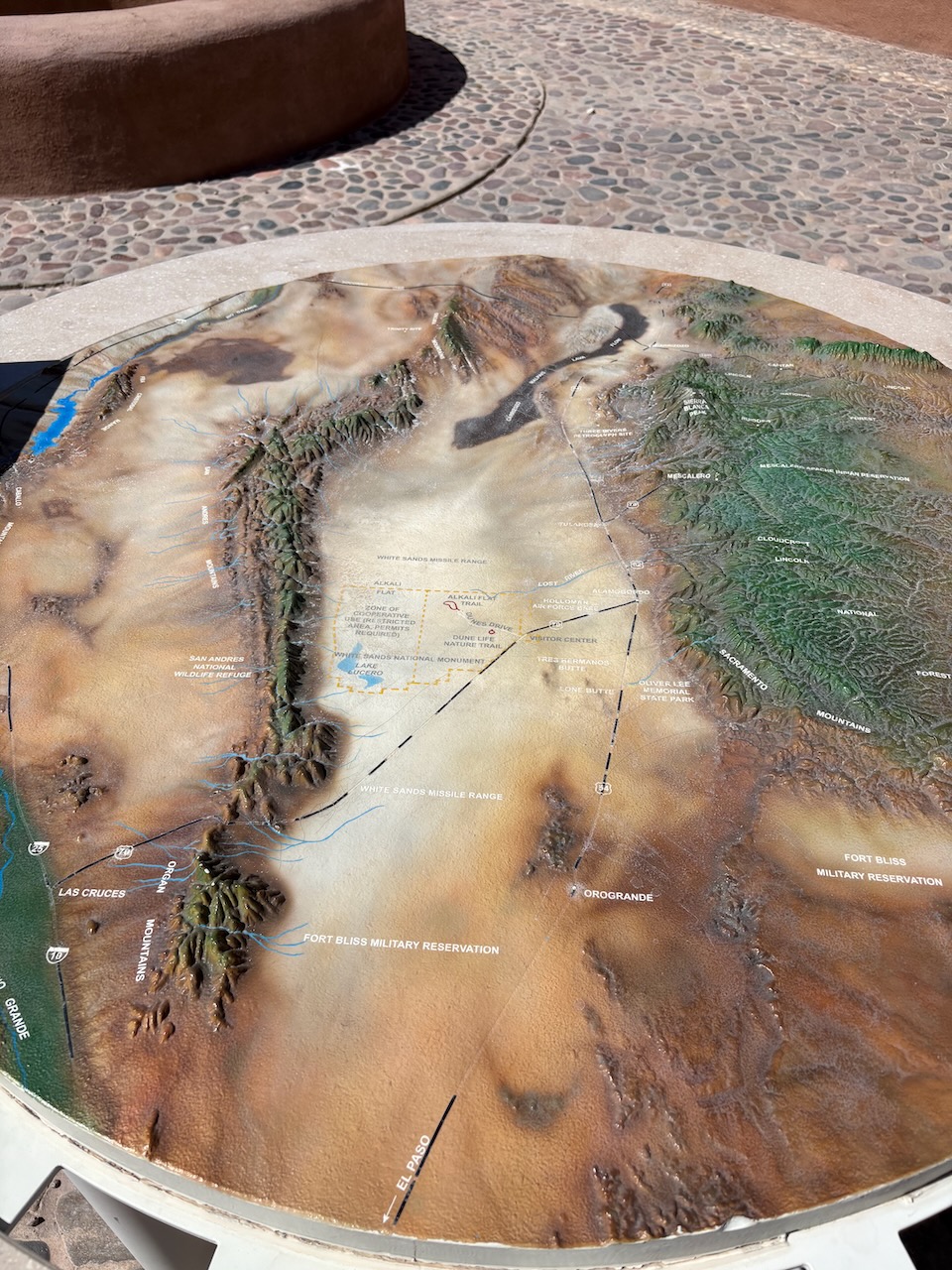
 Almost Unique
Almost UniqueWhite Sands is one of just three gypsum sand dunes in the whole world. It's also home to over 45 endemic species, which can only live in White Sands itself due to specialized adaptations.
We drove out on the dunes drive to the heart of the dunes at Alkali Flat Trail.
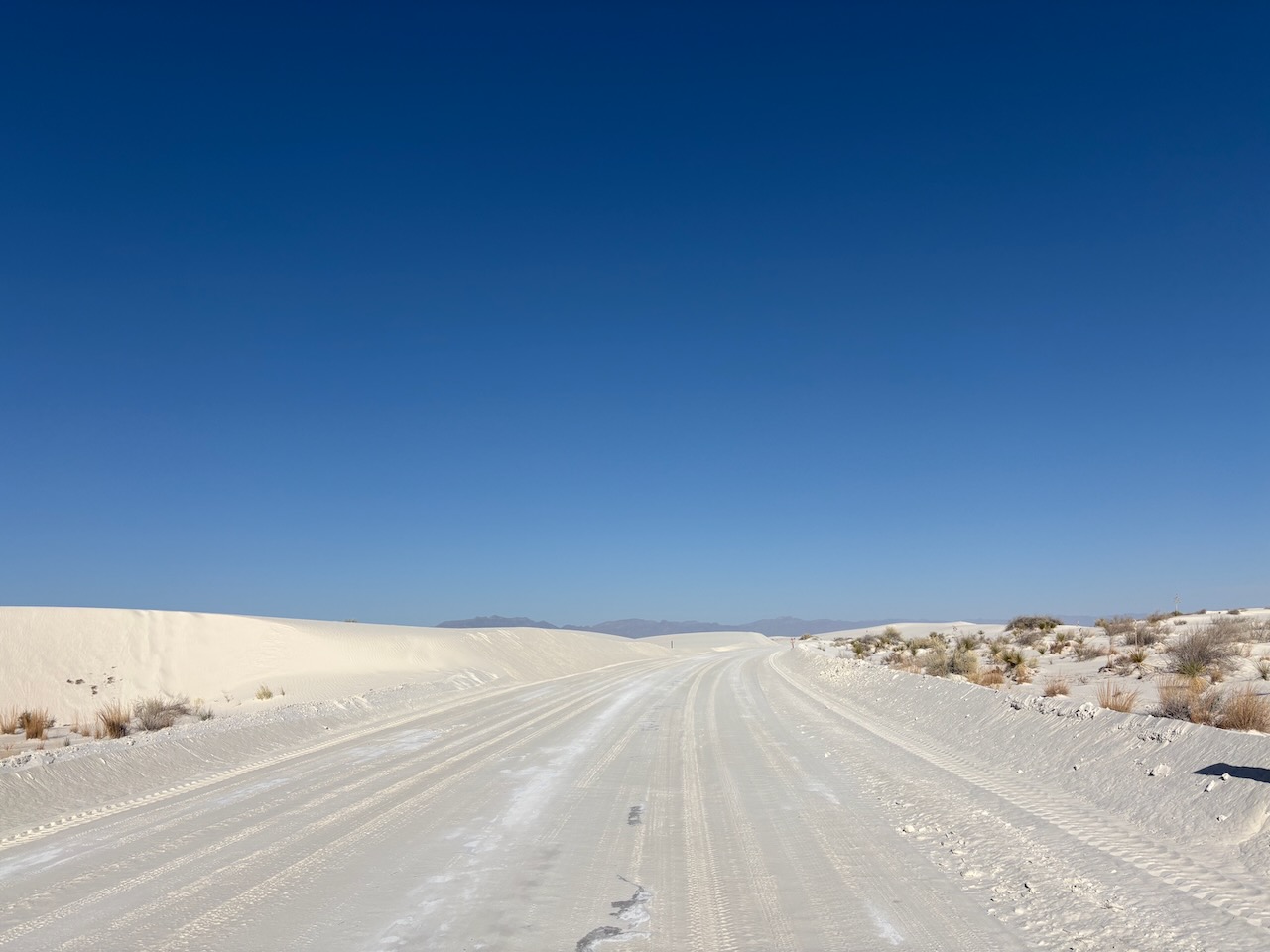
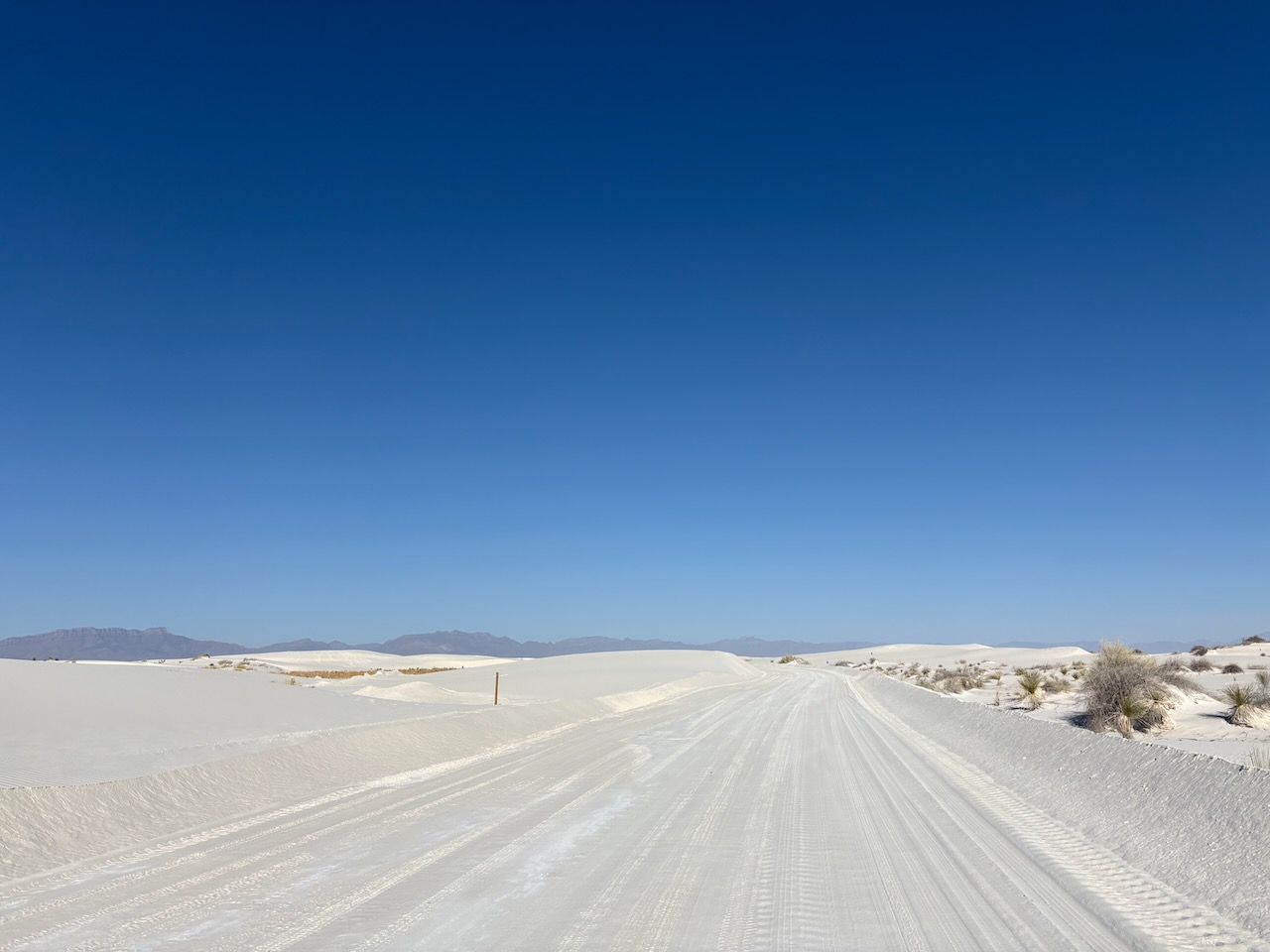
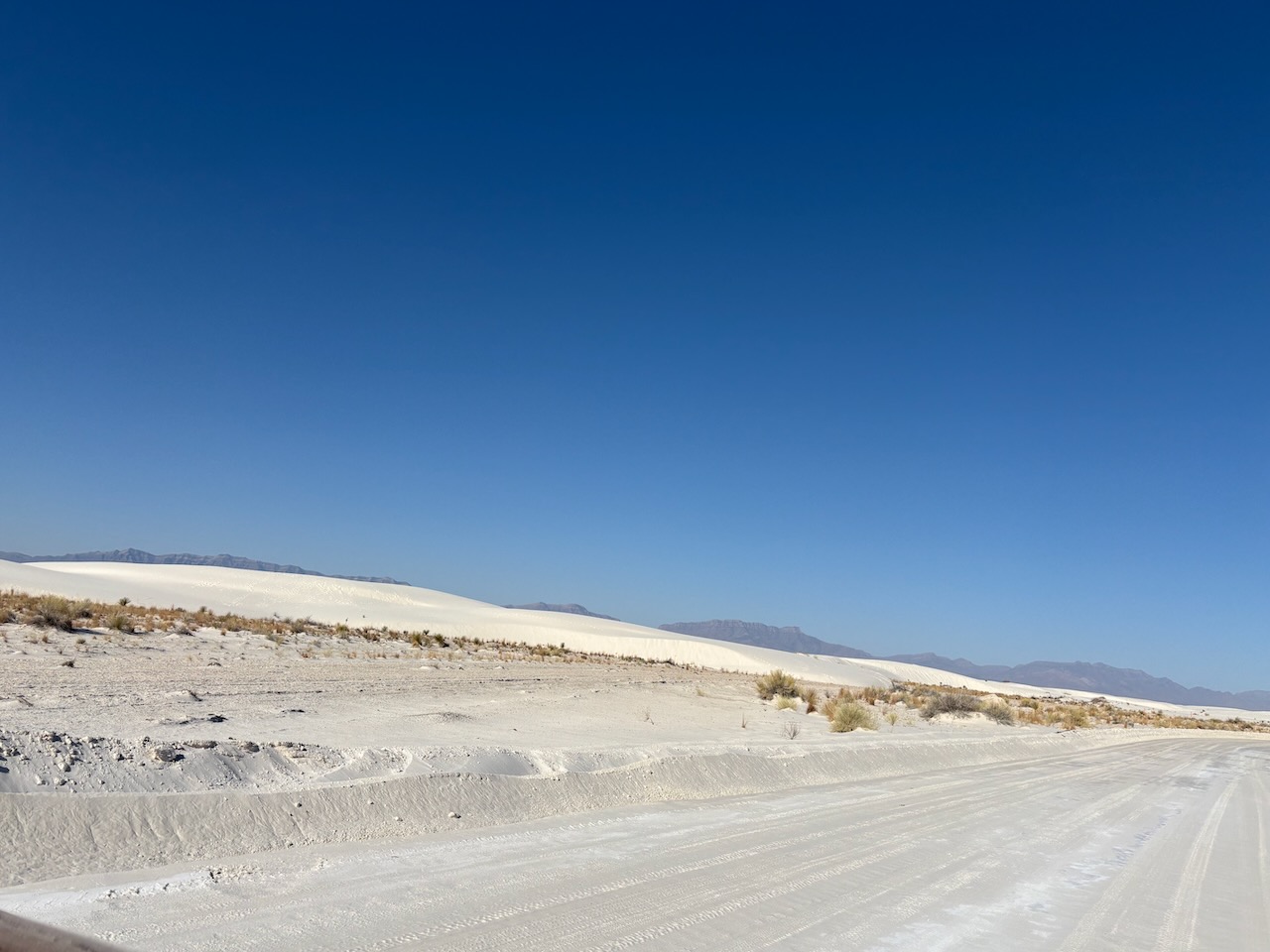
We started the hike and immediately saw how much the dunes move, with the first trail marker buried 3 feet below a
sand-drift.
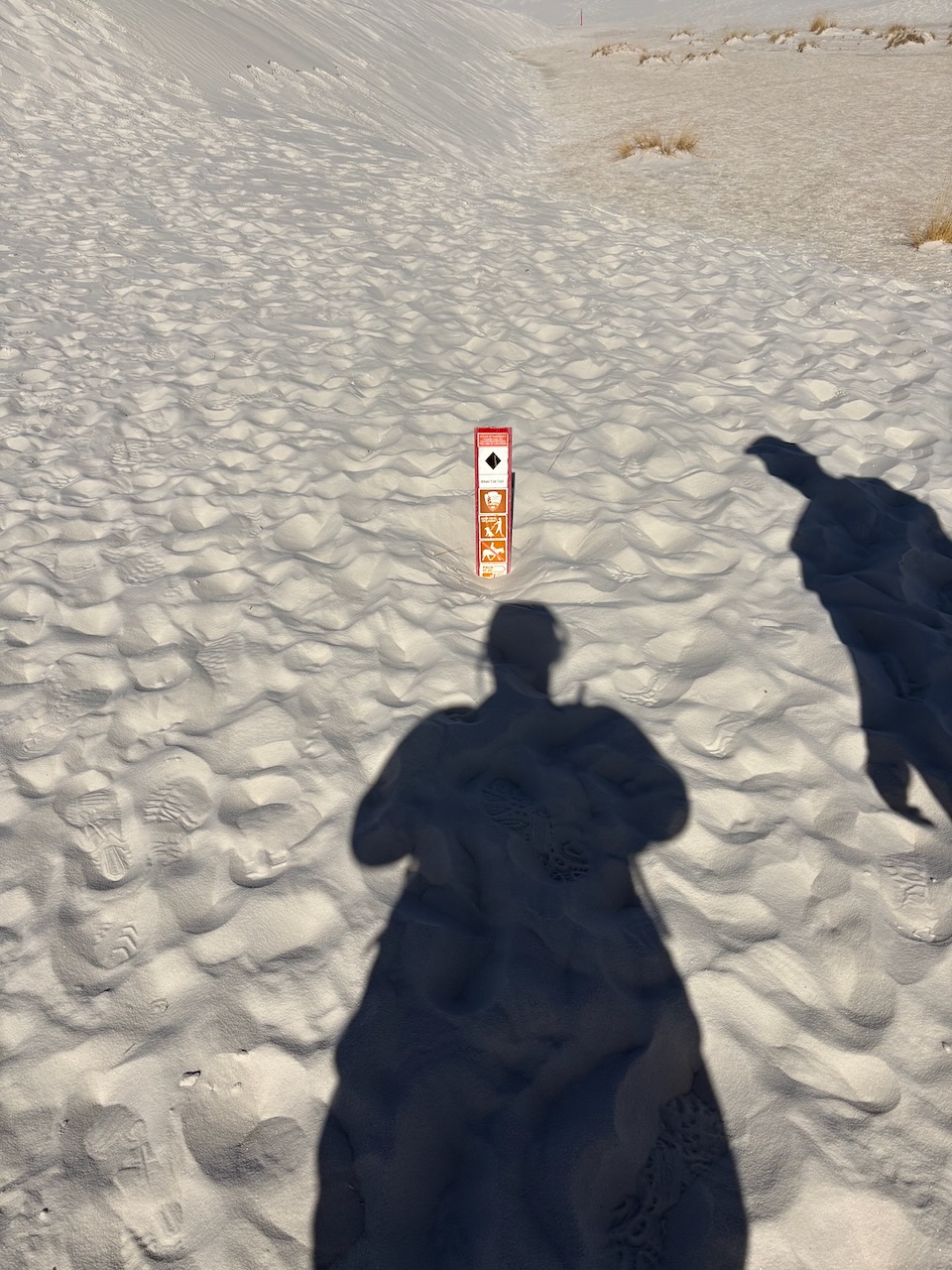
The next one wasn't much better, buried 2 and a half feet.
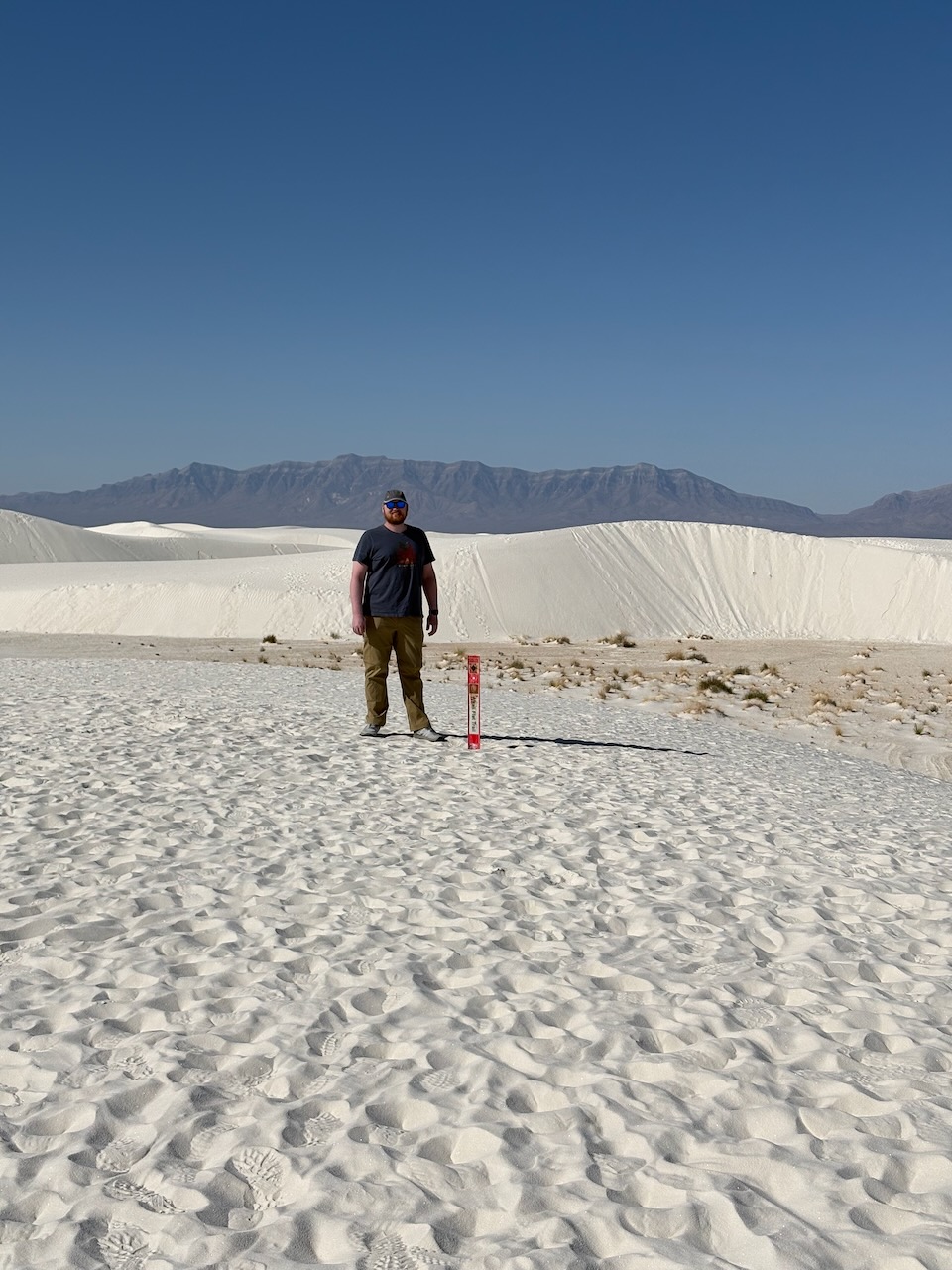

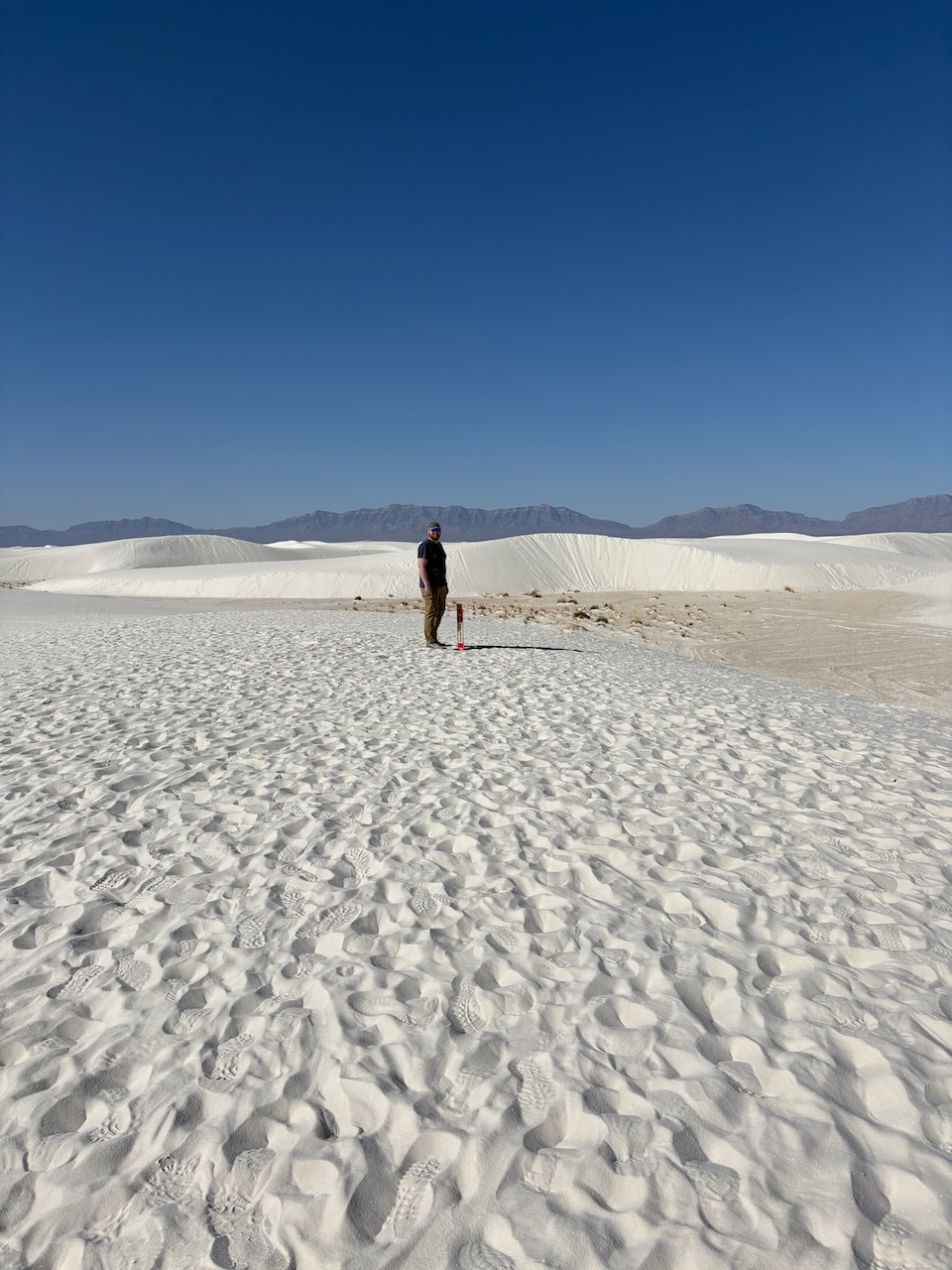
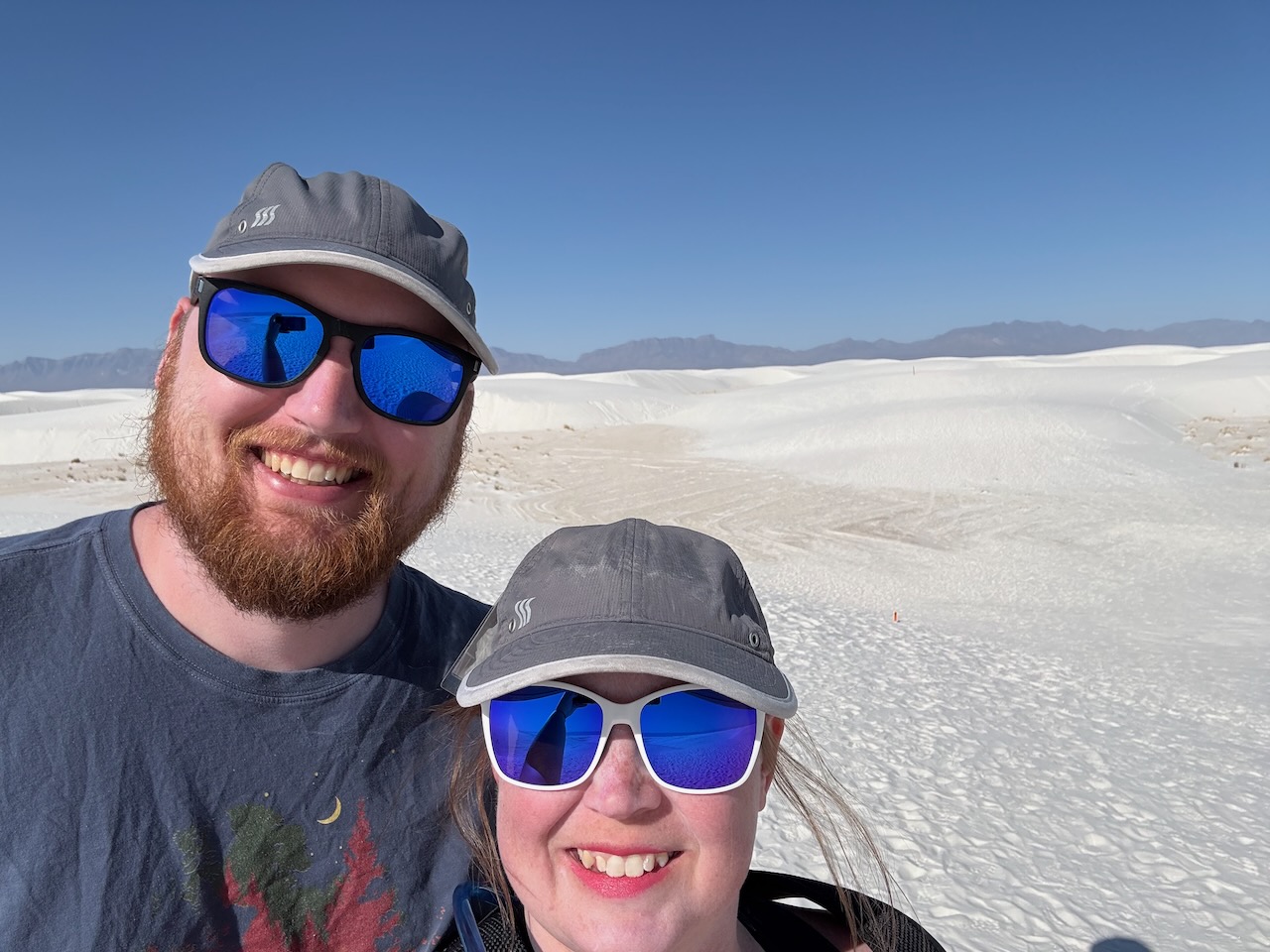
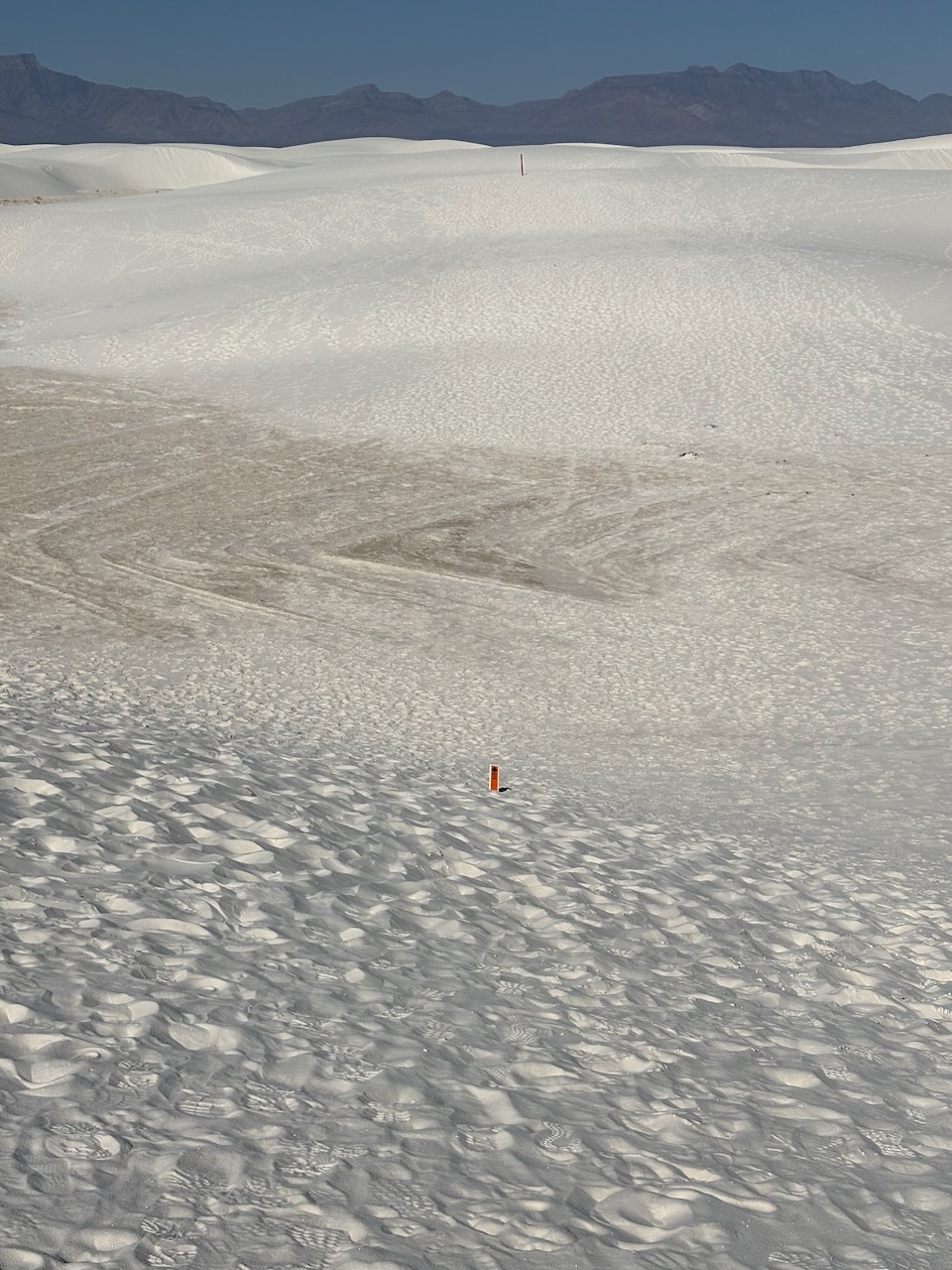

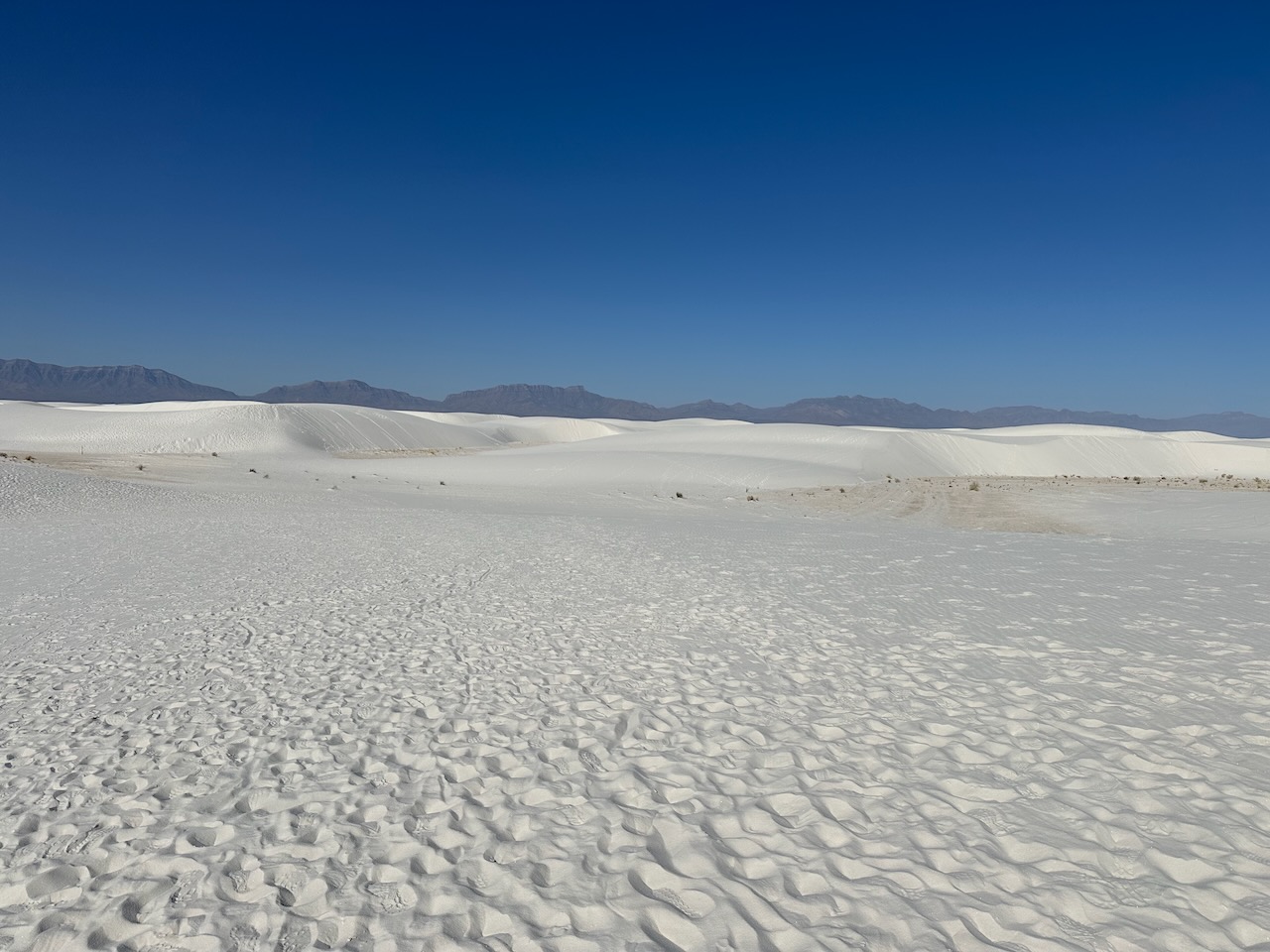
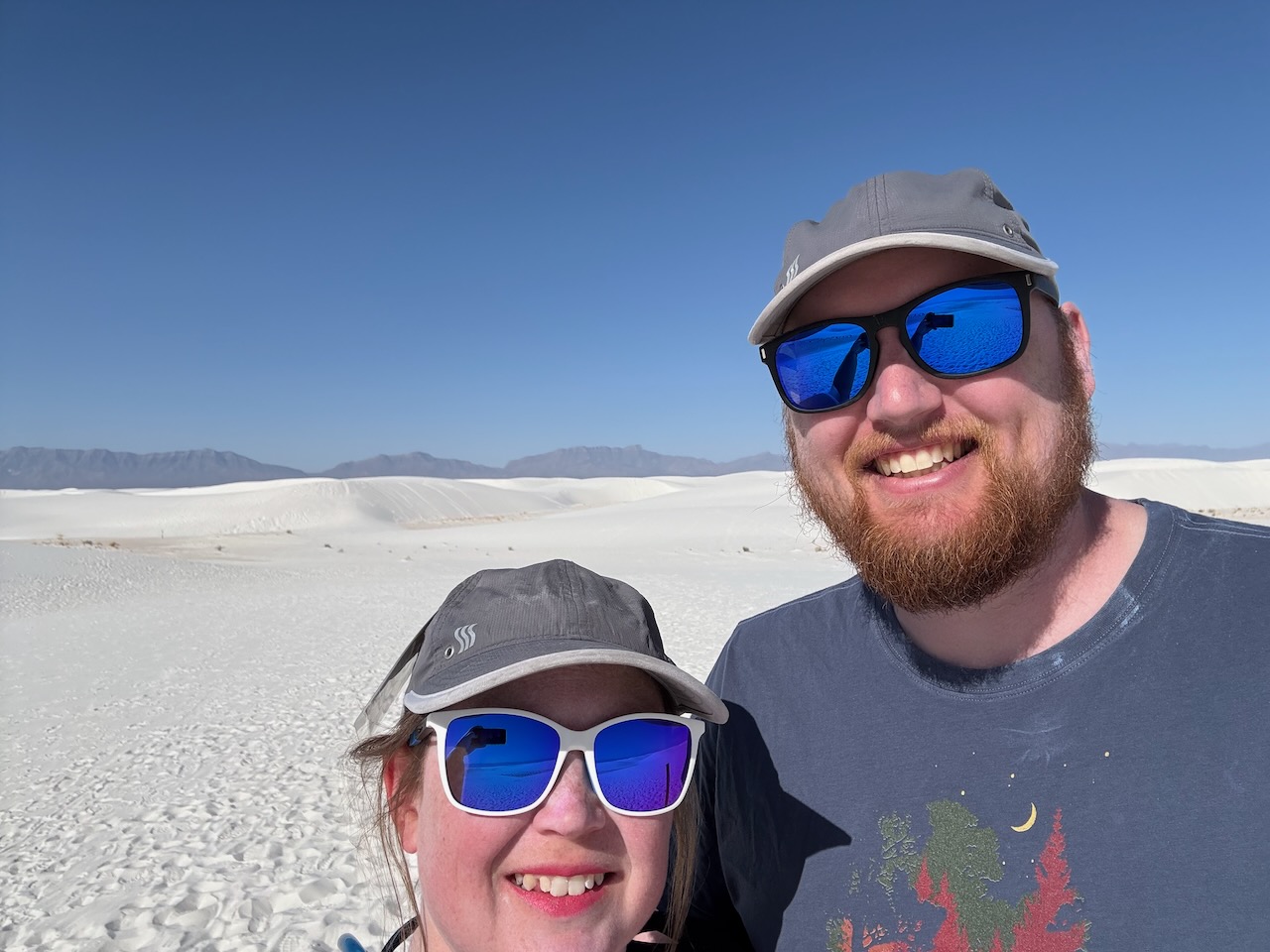
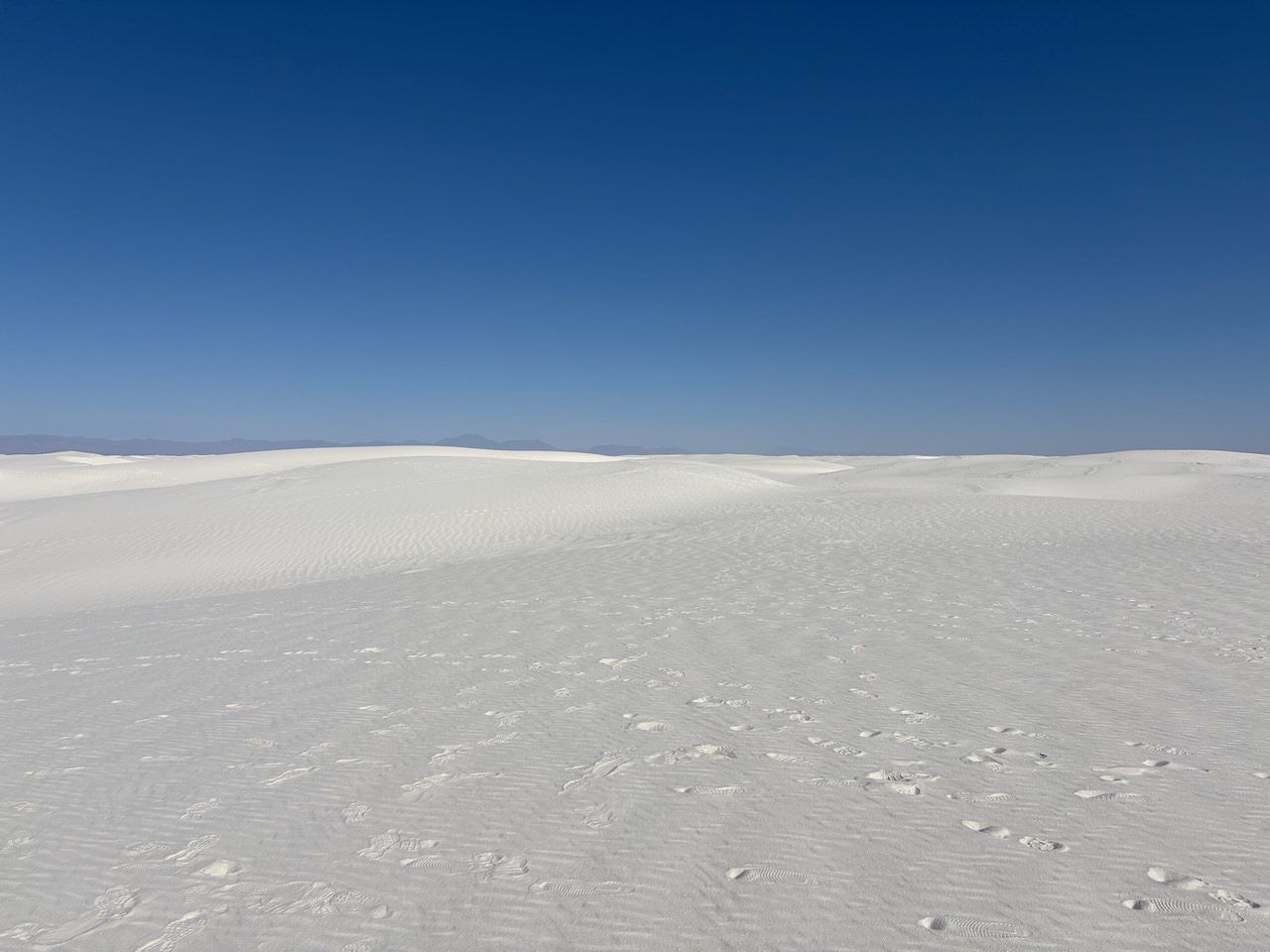
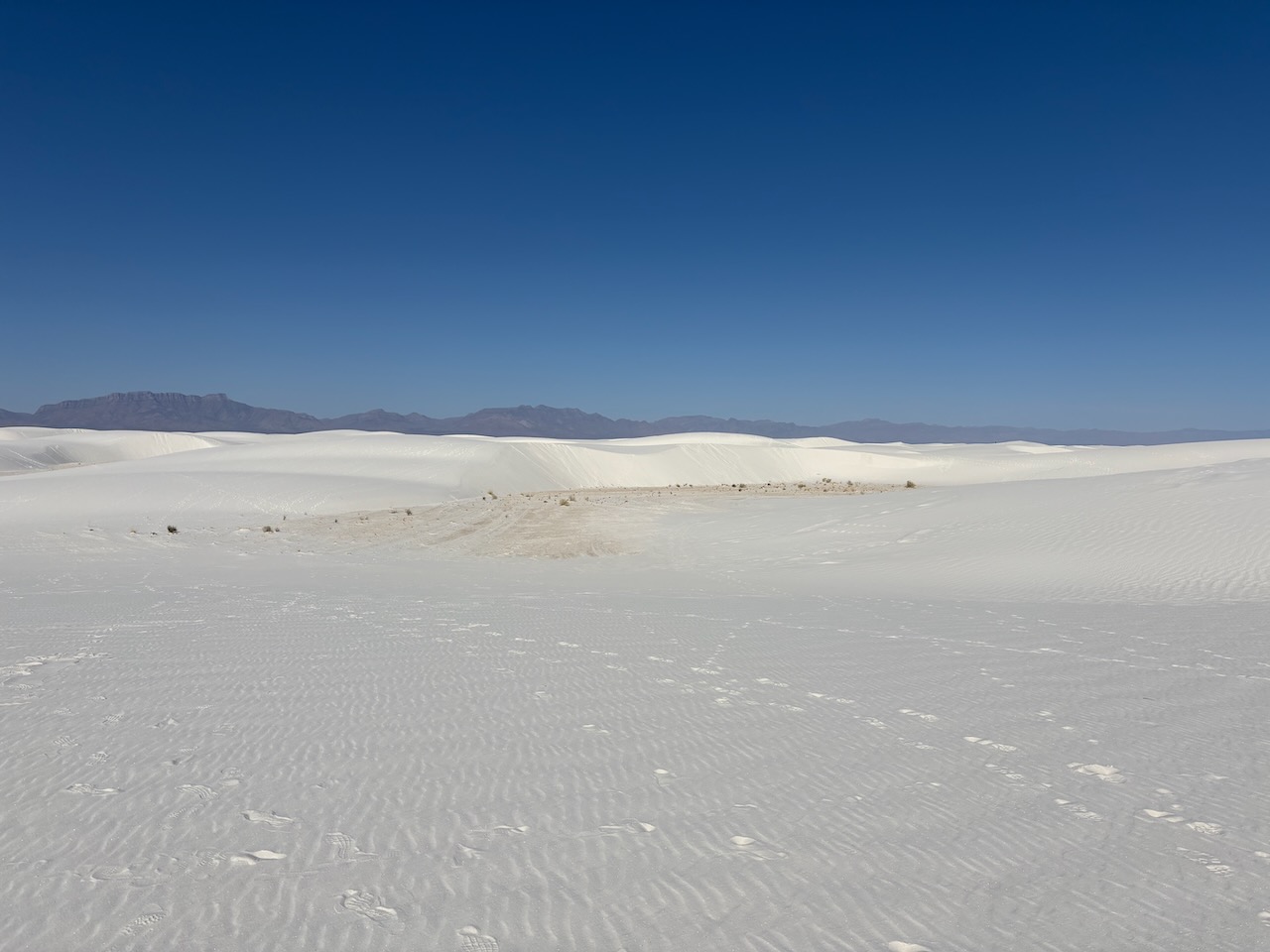
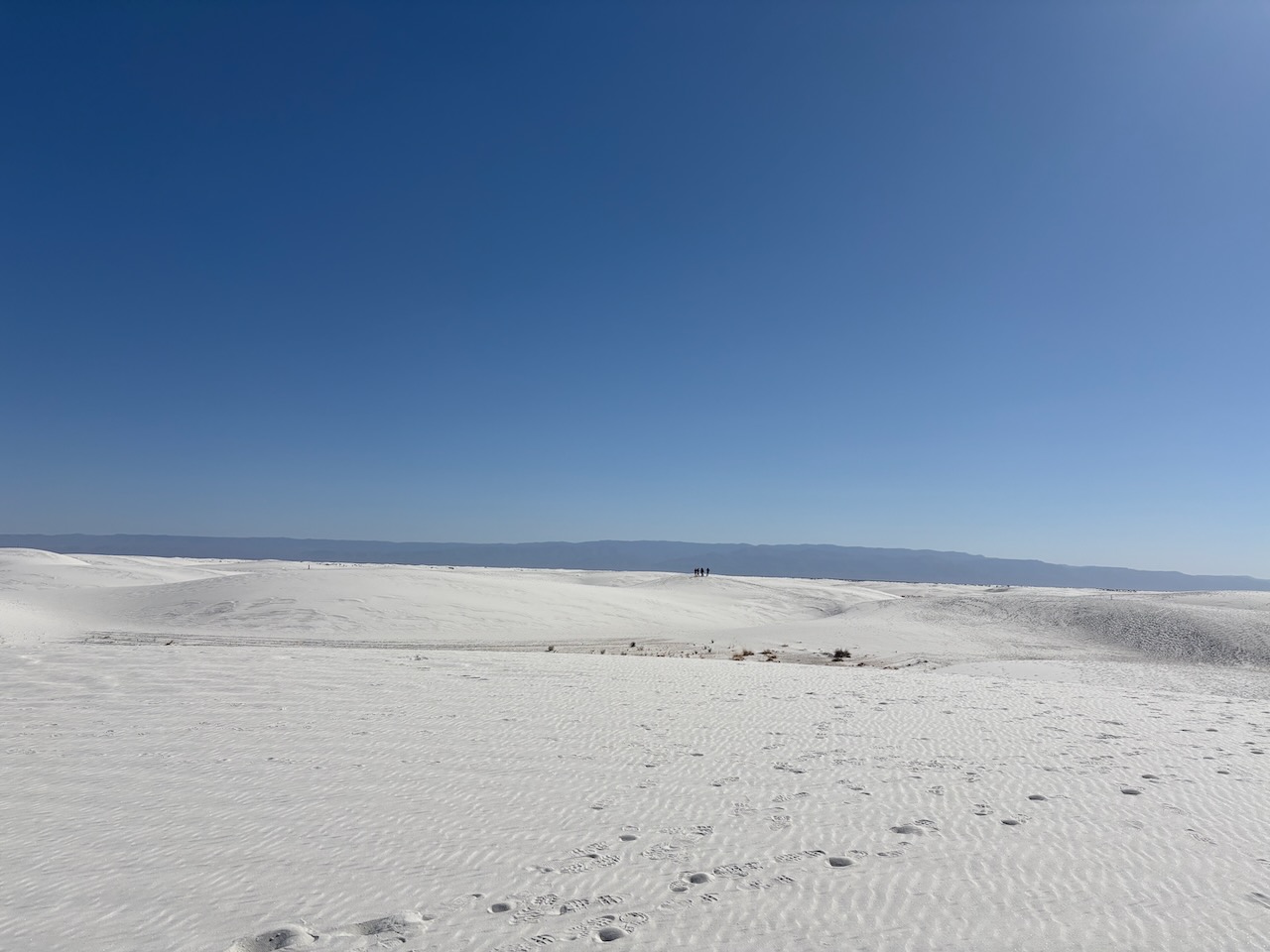
One of the dunes was really steep and we really slid down it!
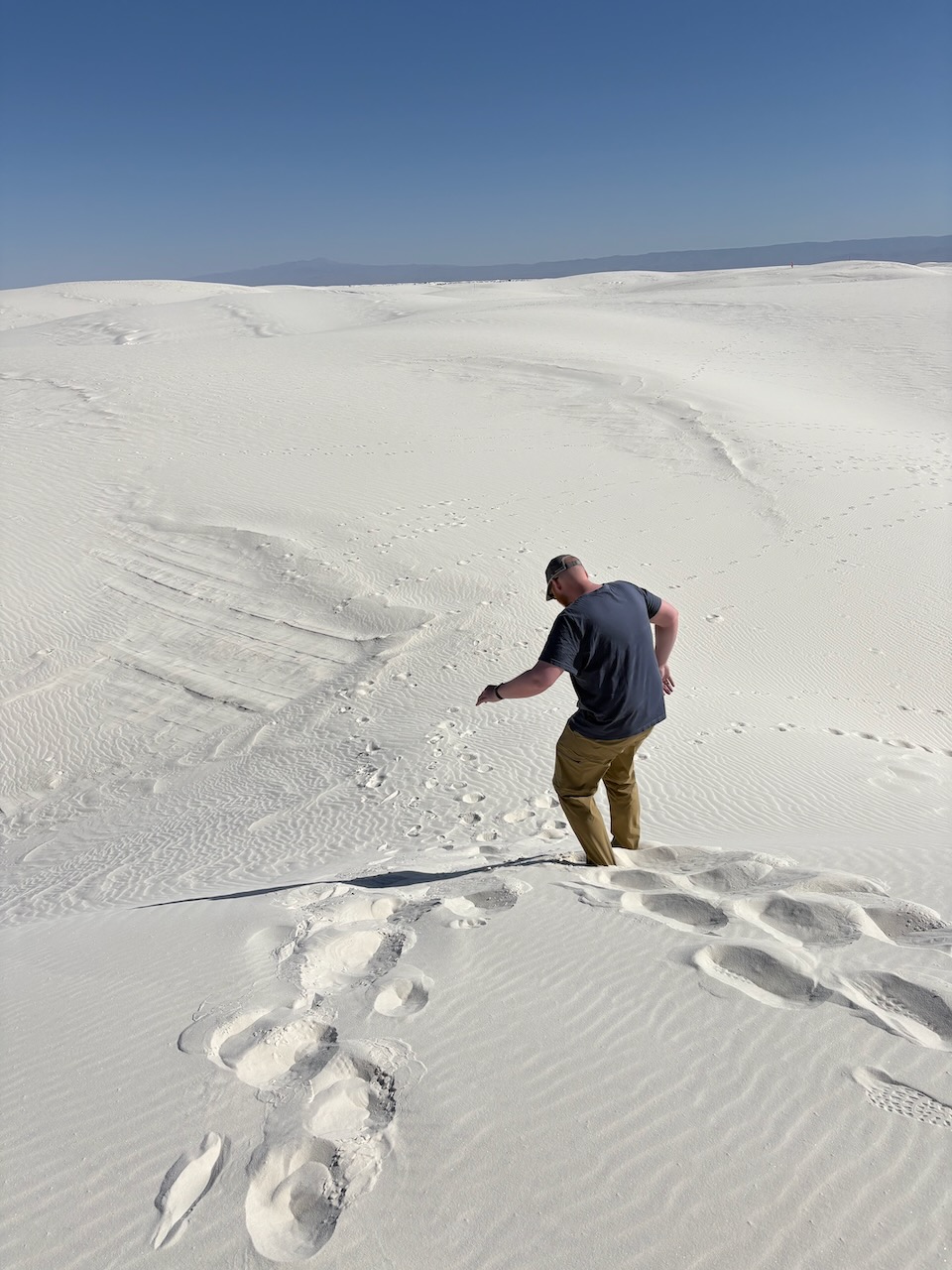

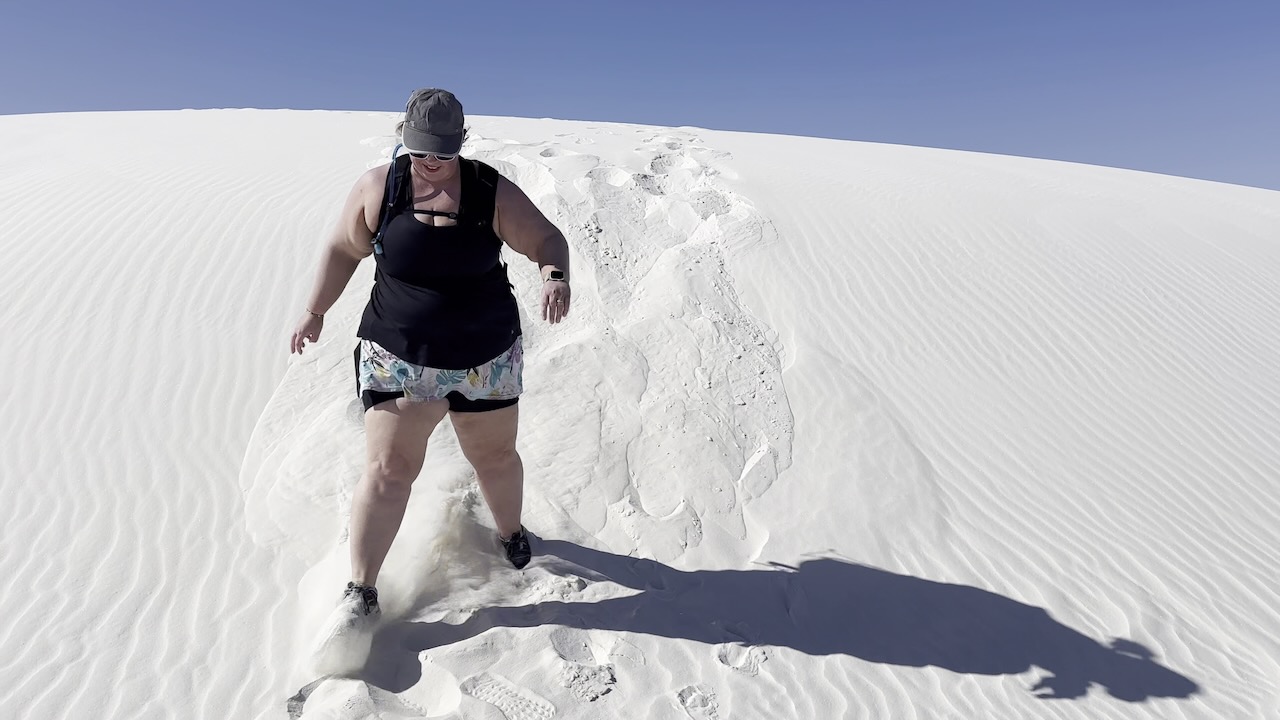
After our dunes hike, we decided to attempt to sled, and had a decent amount of success. Sara was much better at it.
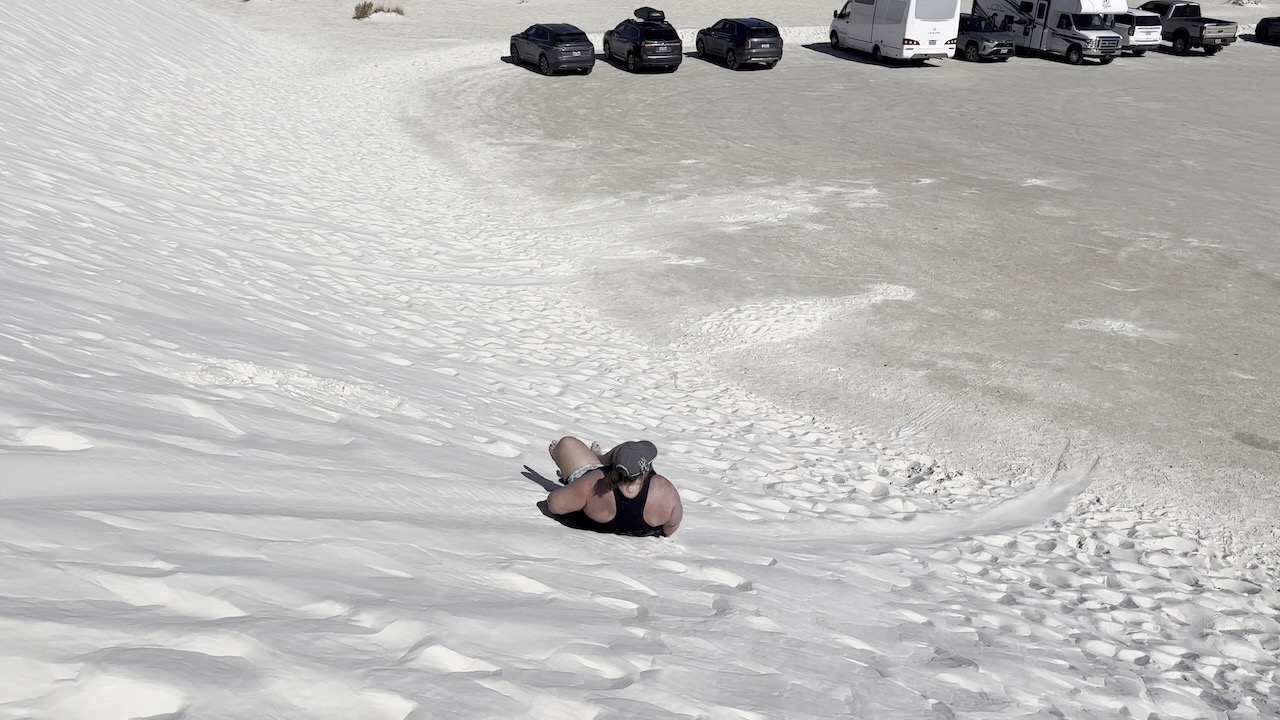
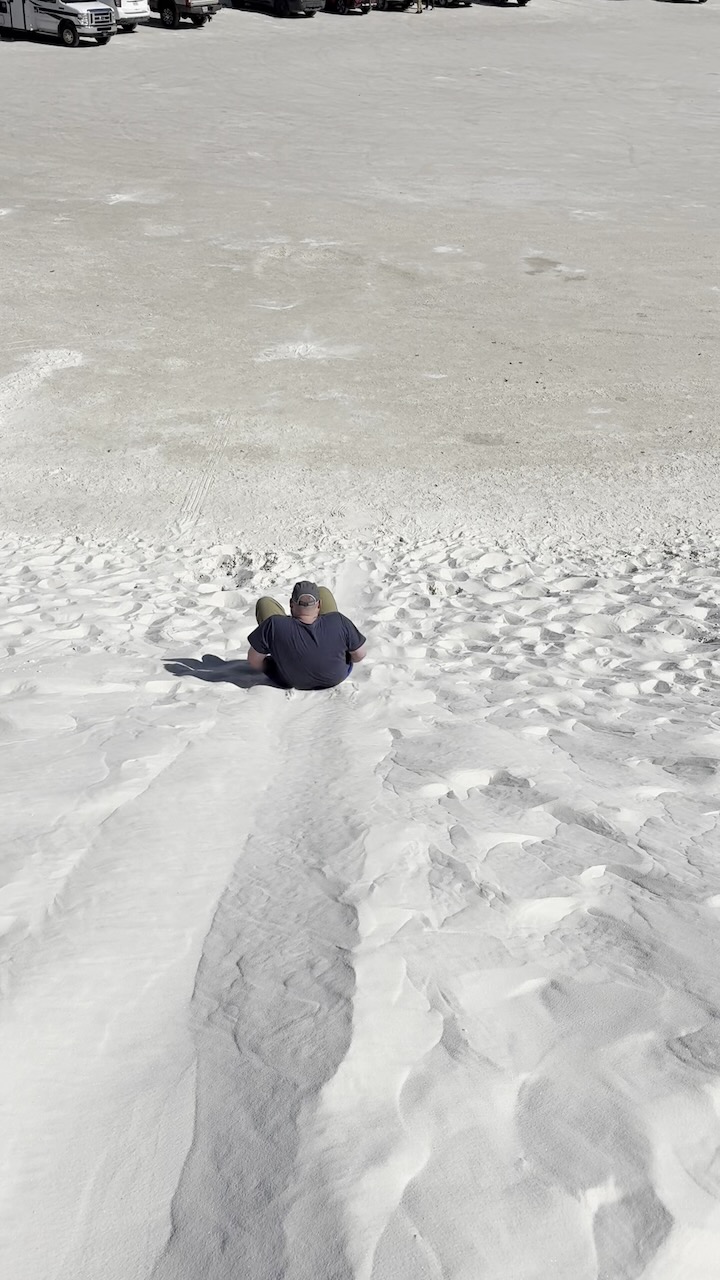
After a dozen climbs up the dunes we were getting tired so decided to head to the other hike we were interested in,
the Desert Nature Trail. We were warned to stay away from any strange metal objects we saw, as they might be bits
and bombs from the military planes.
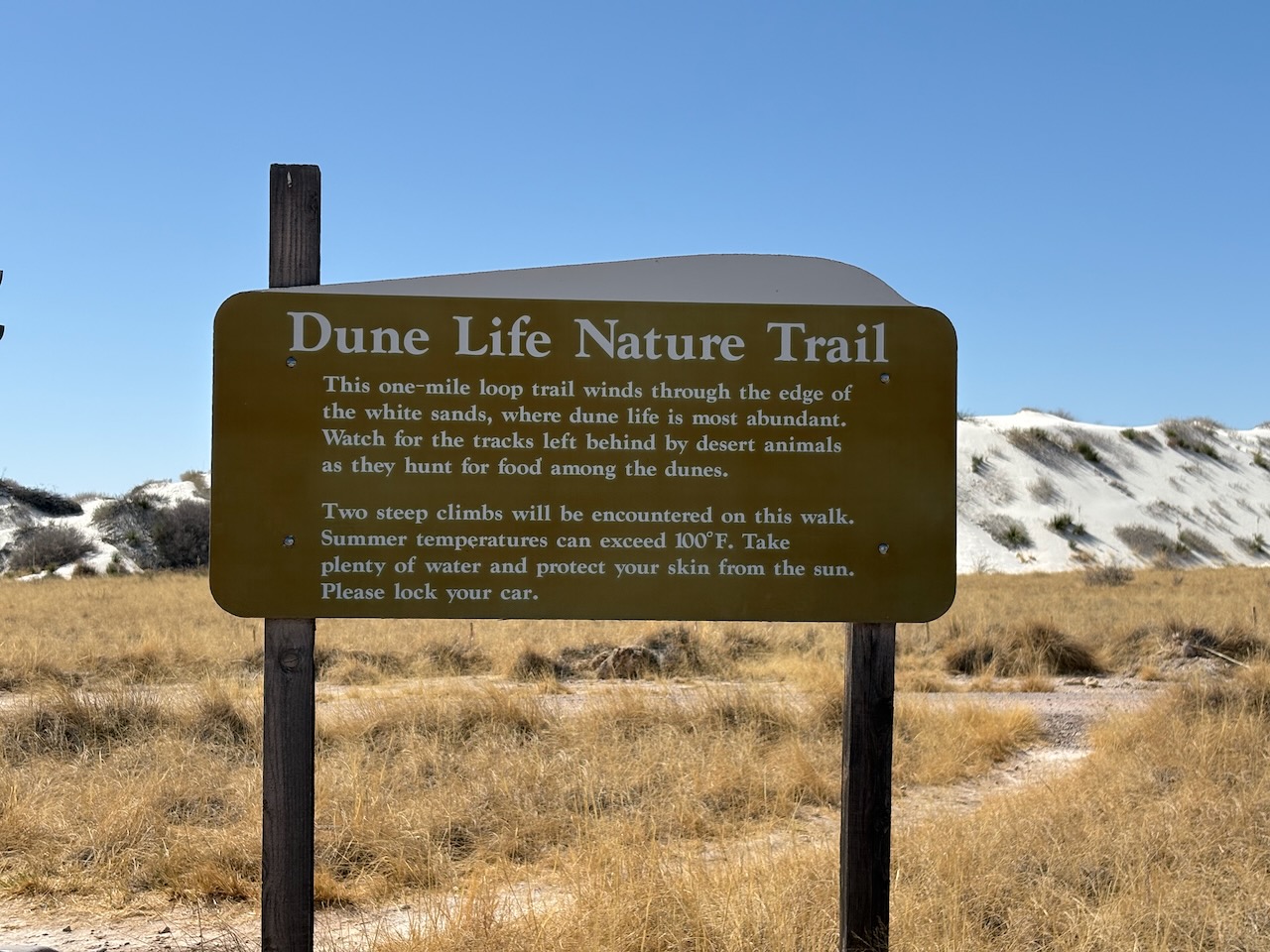

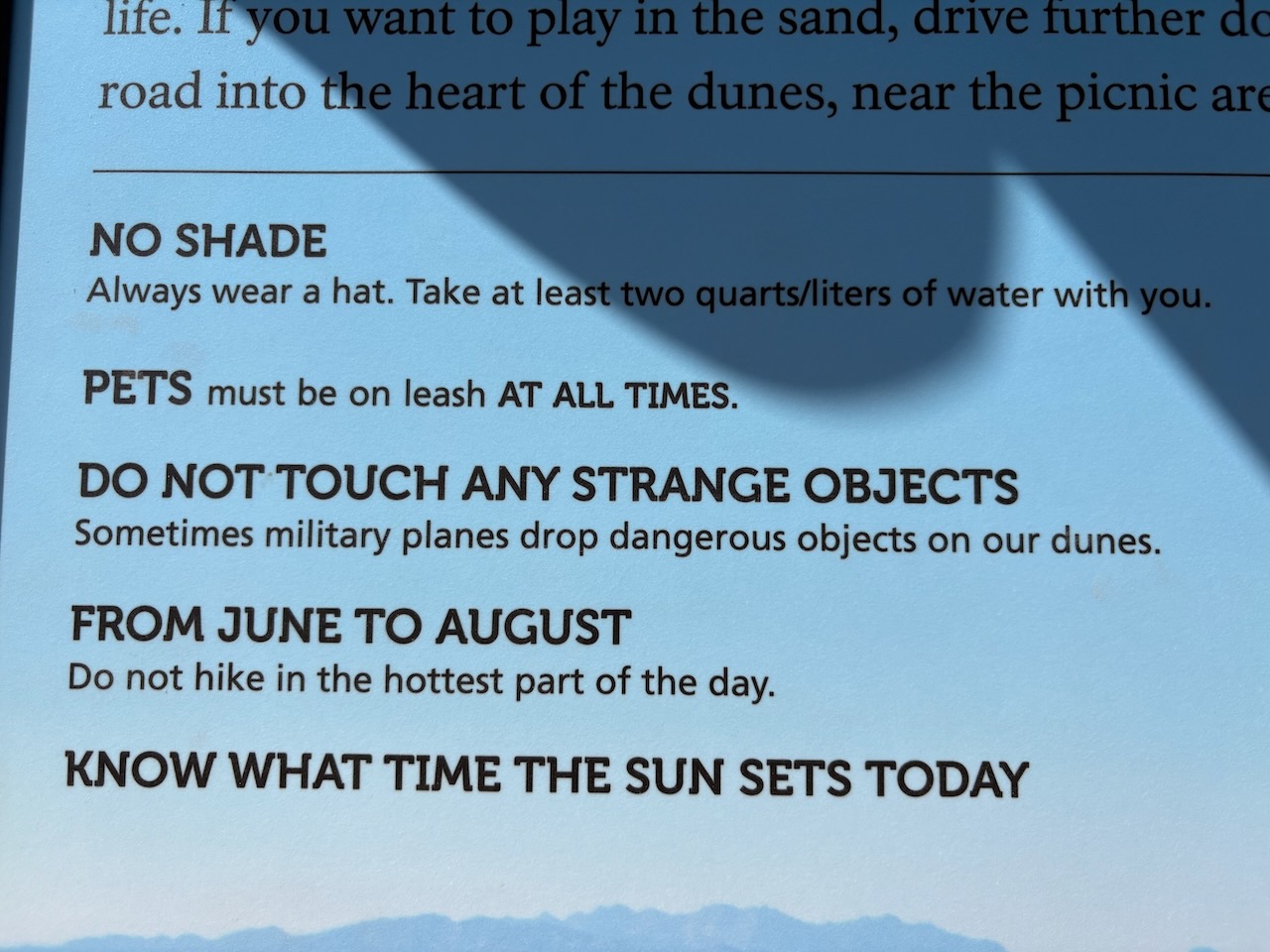
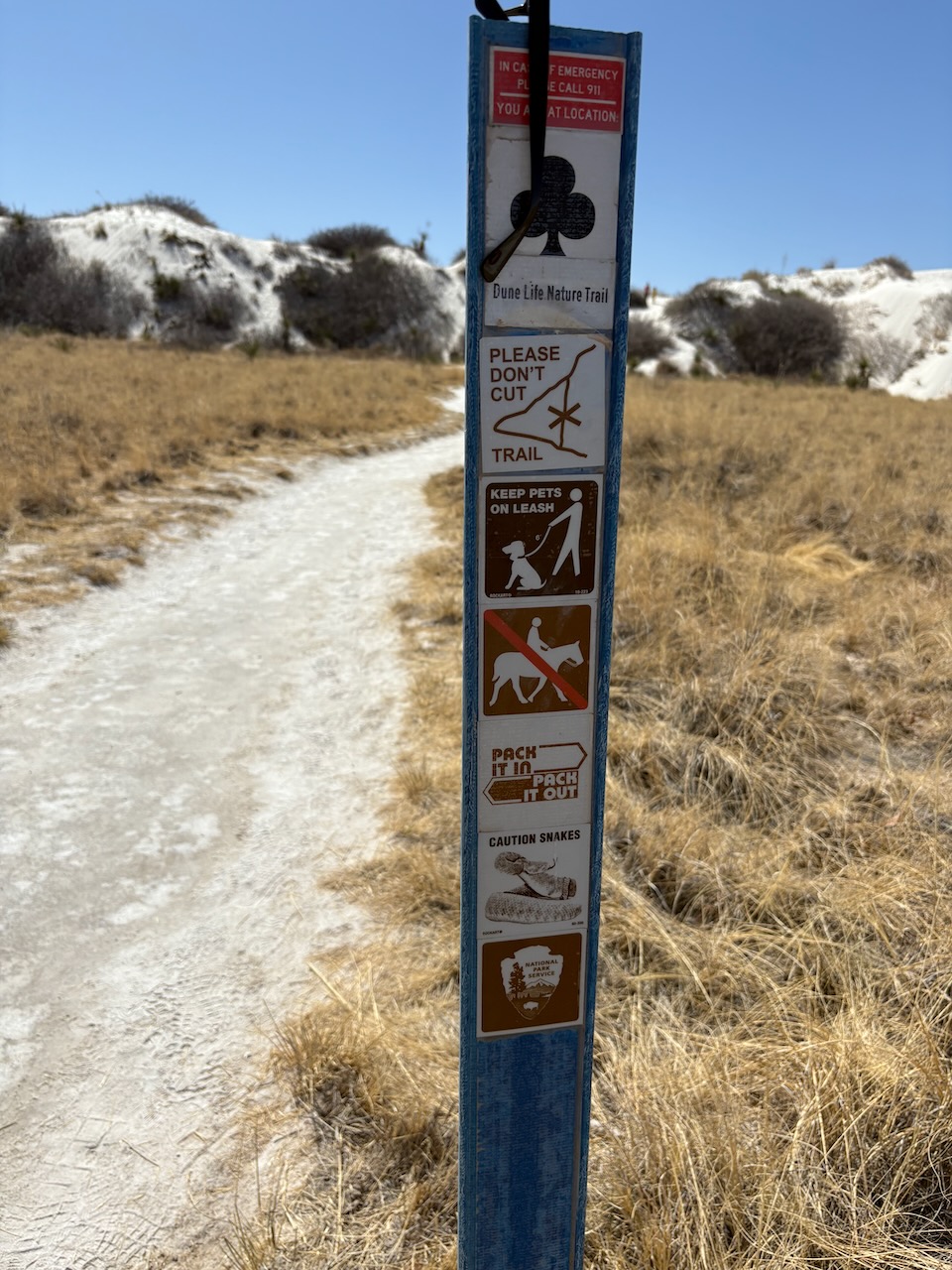
This led us through a part of the park where the dunes met the desert scrub-land. It had cool plaques explaining how the wildlife survives in this harsh environment.
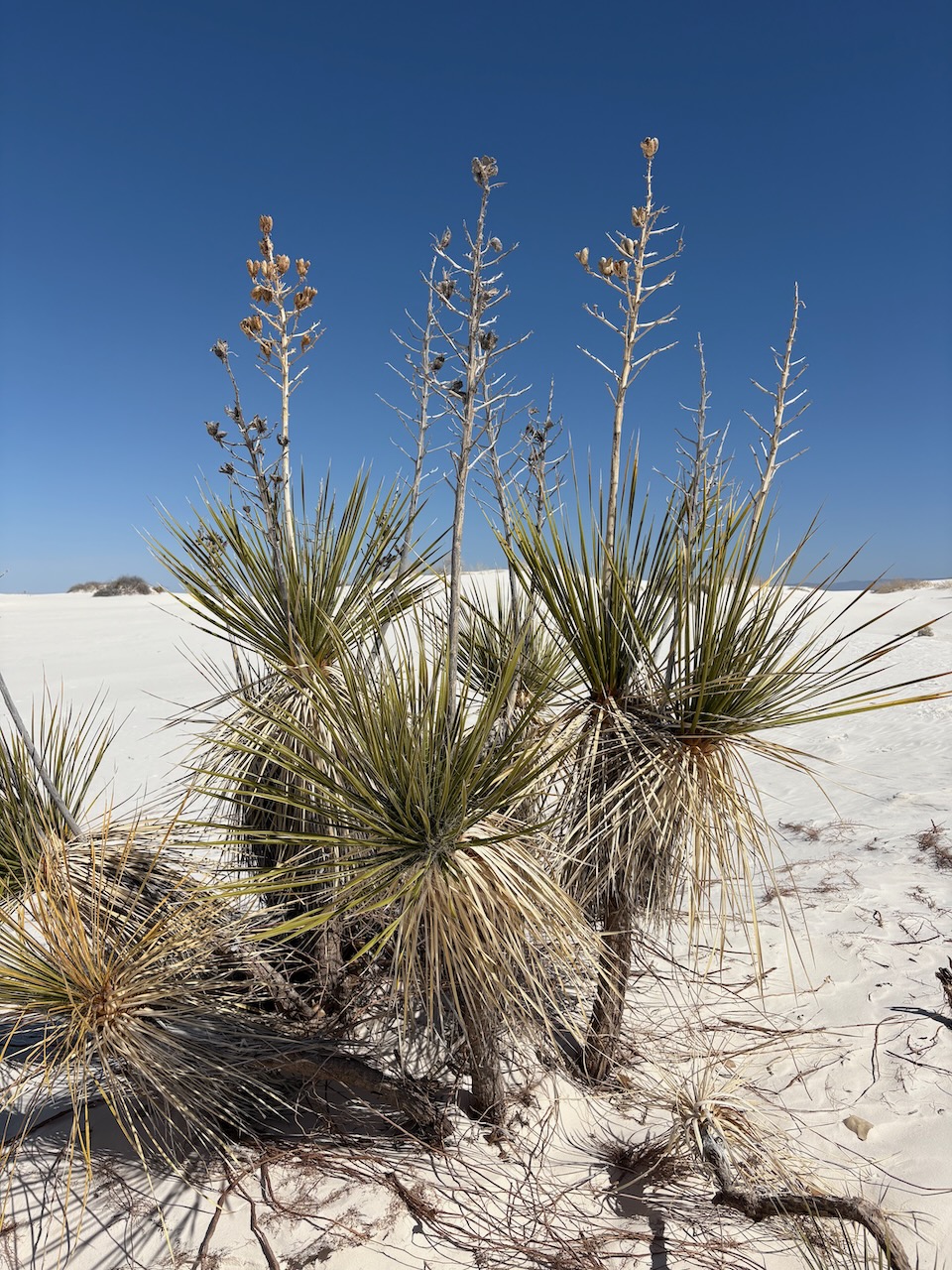
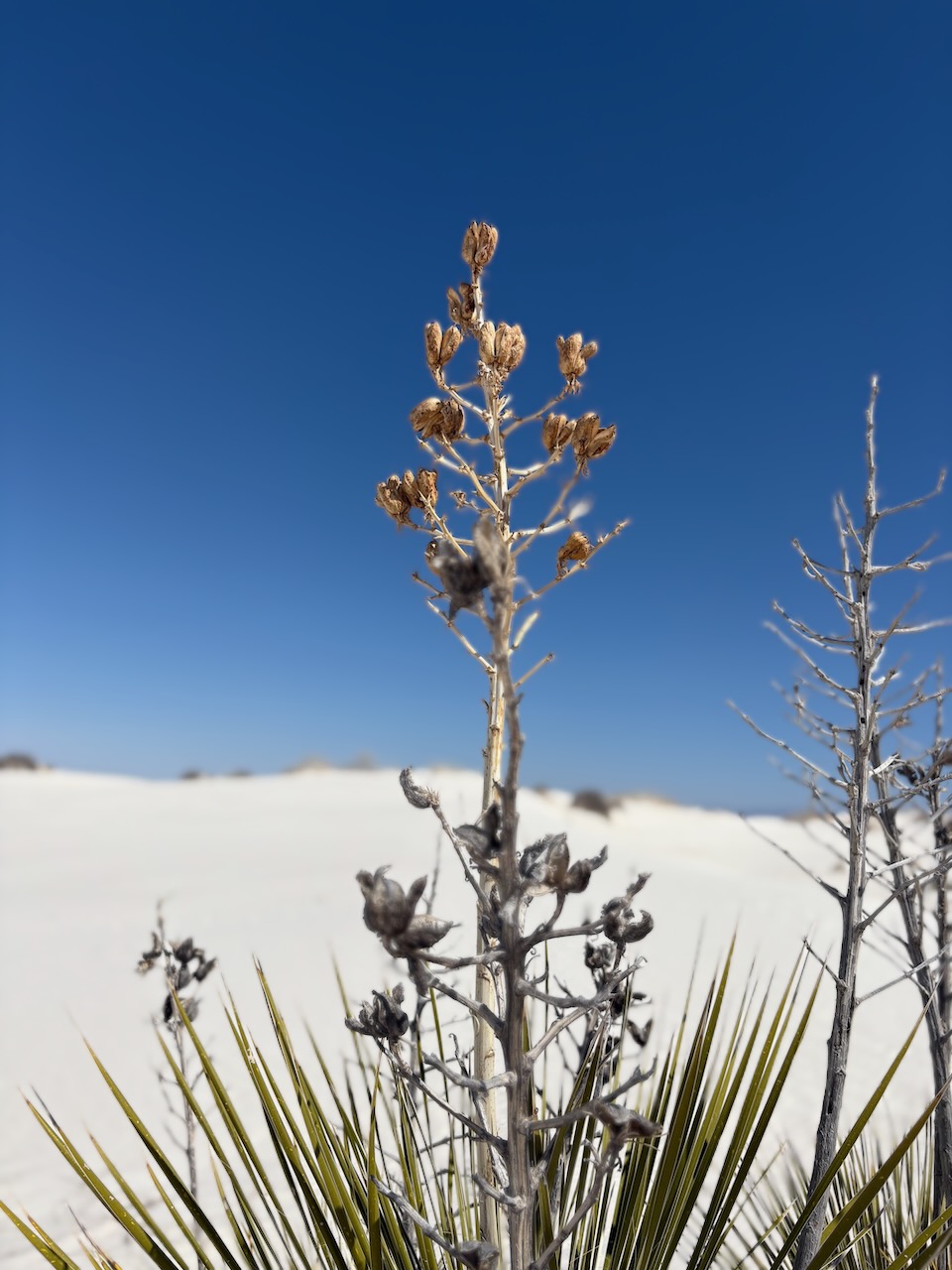
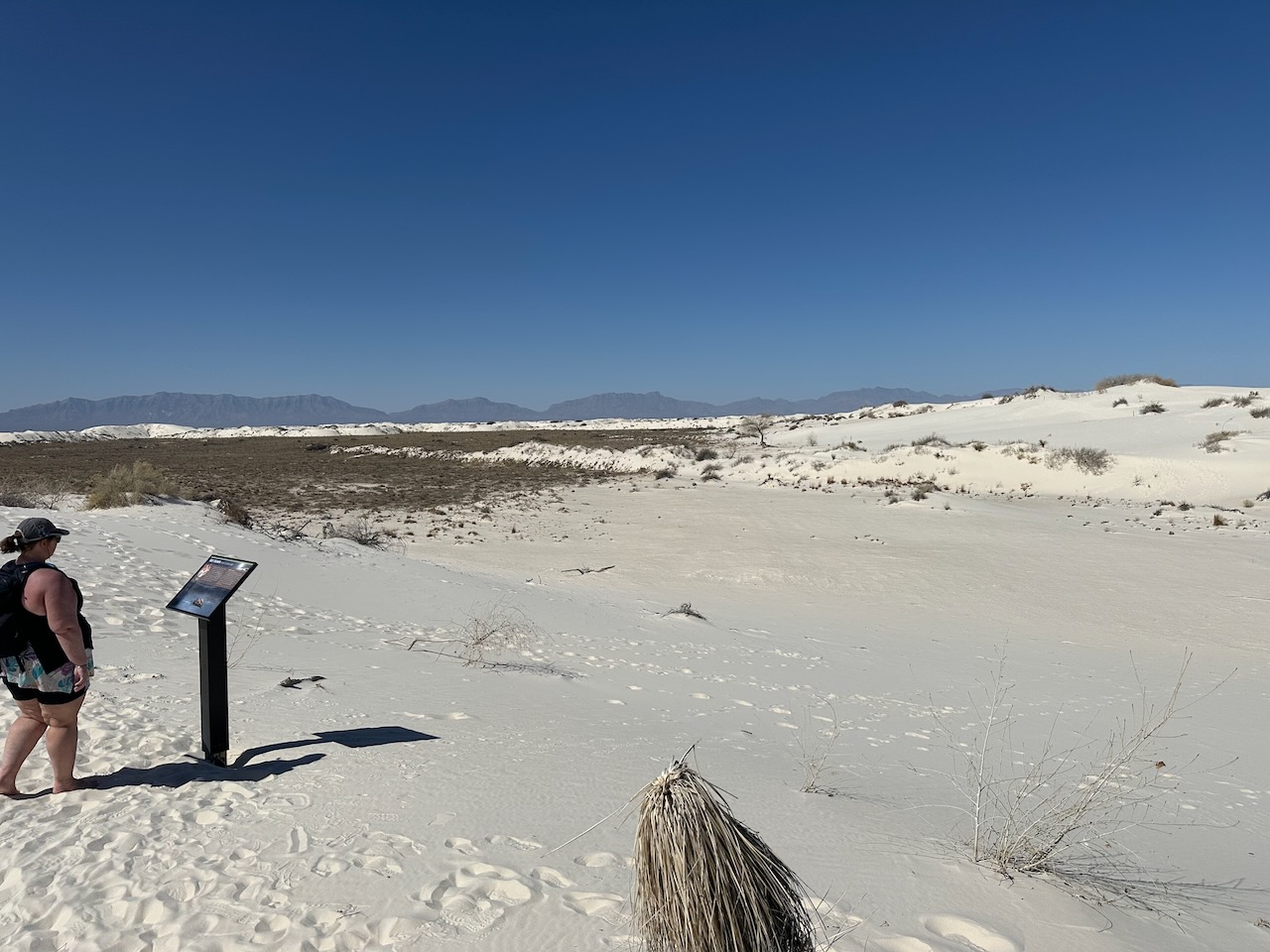

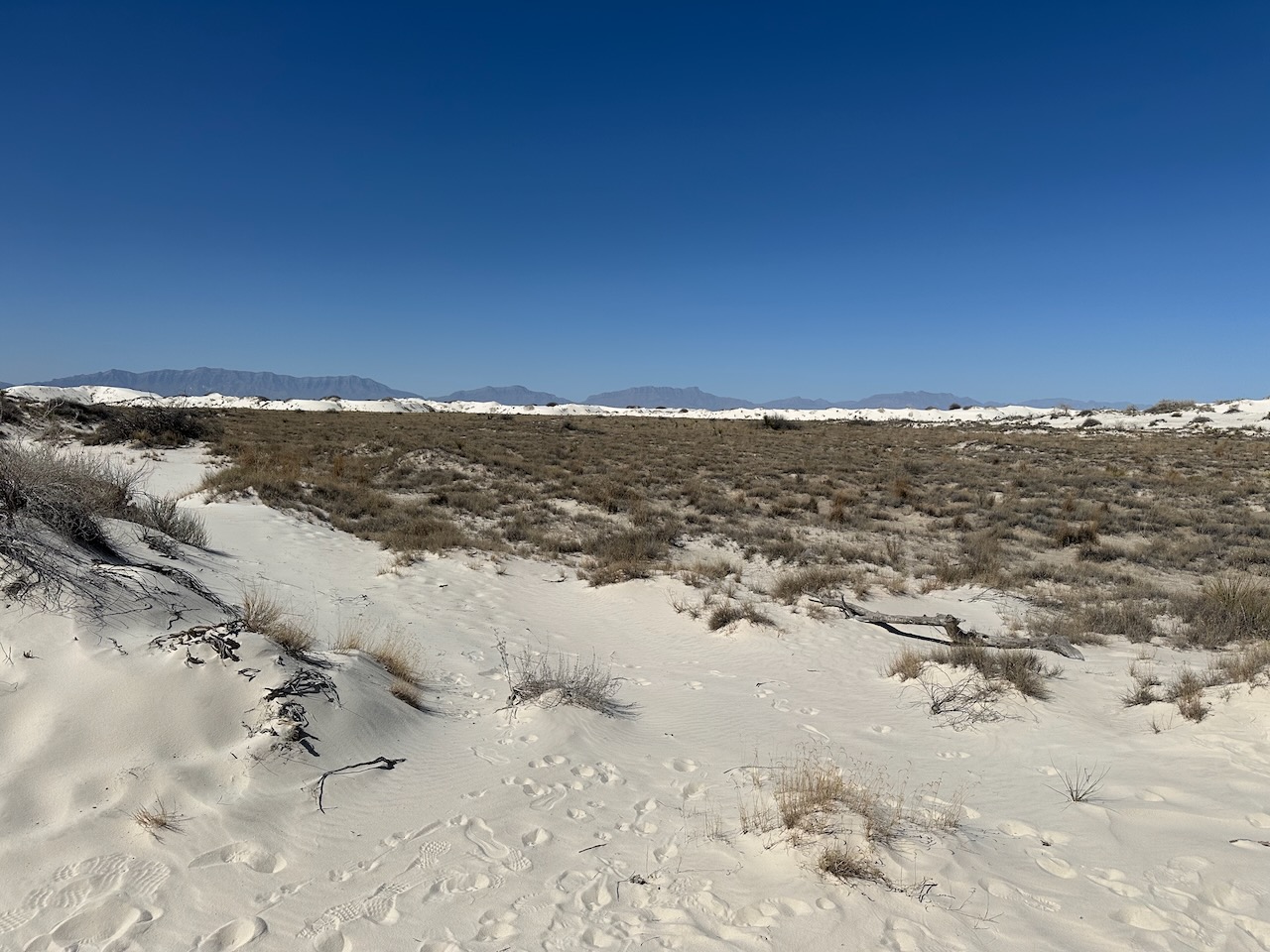
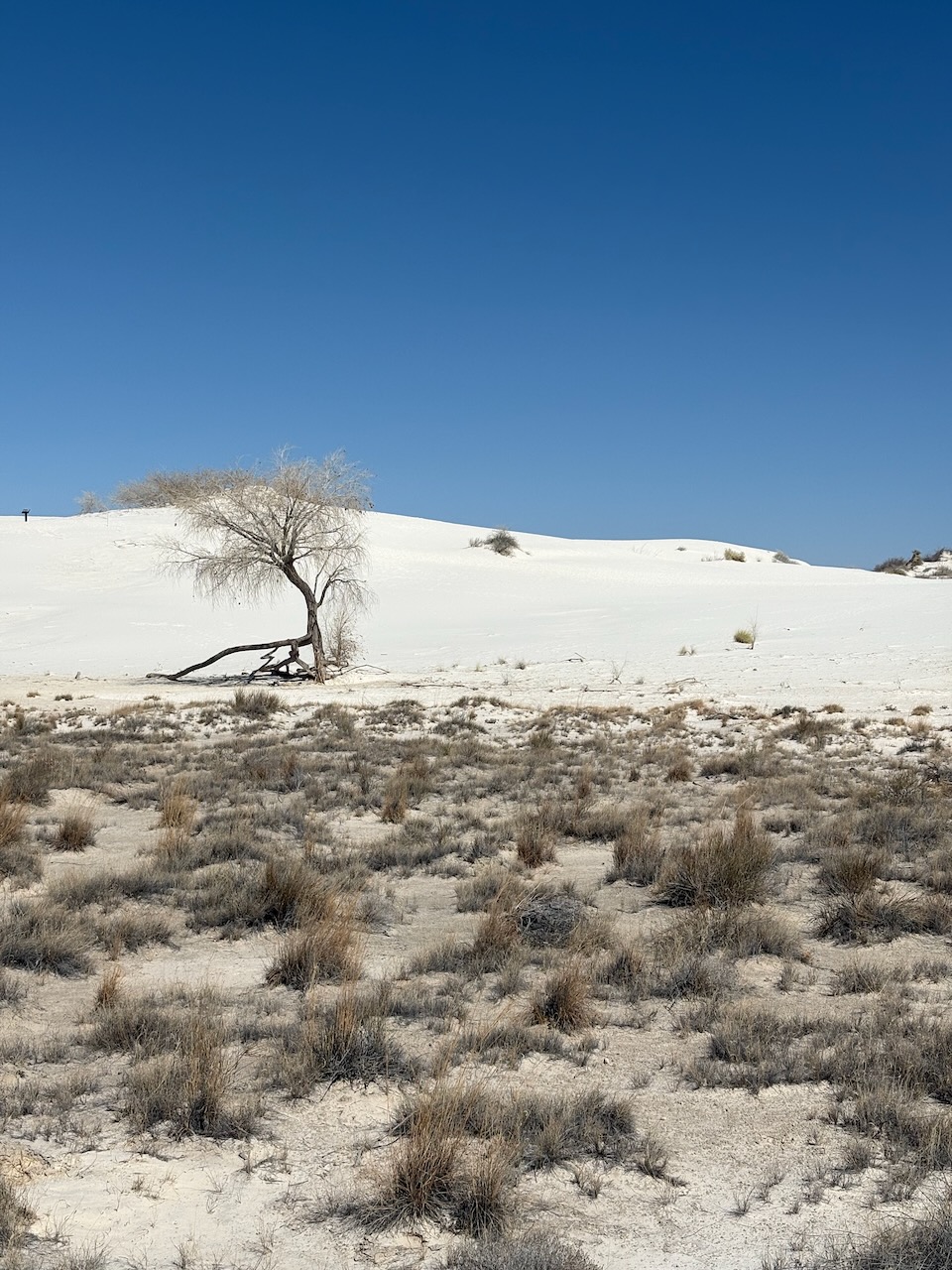
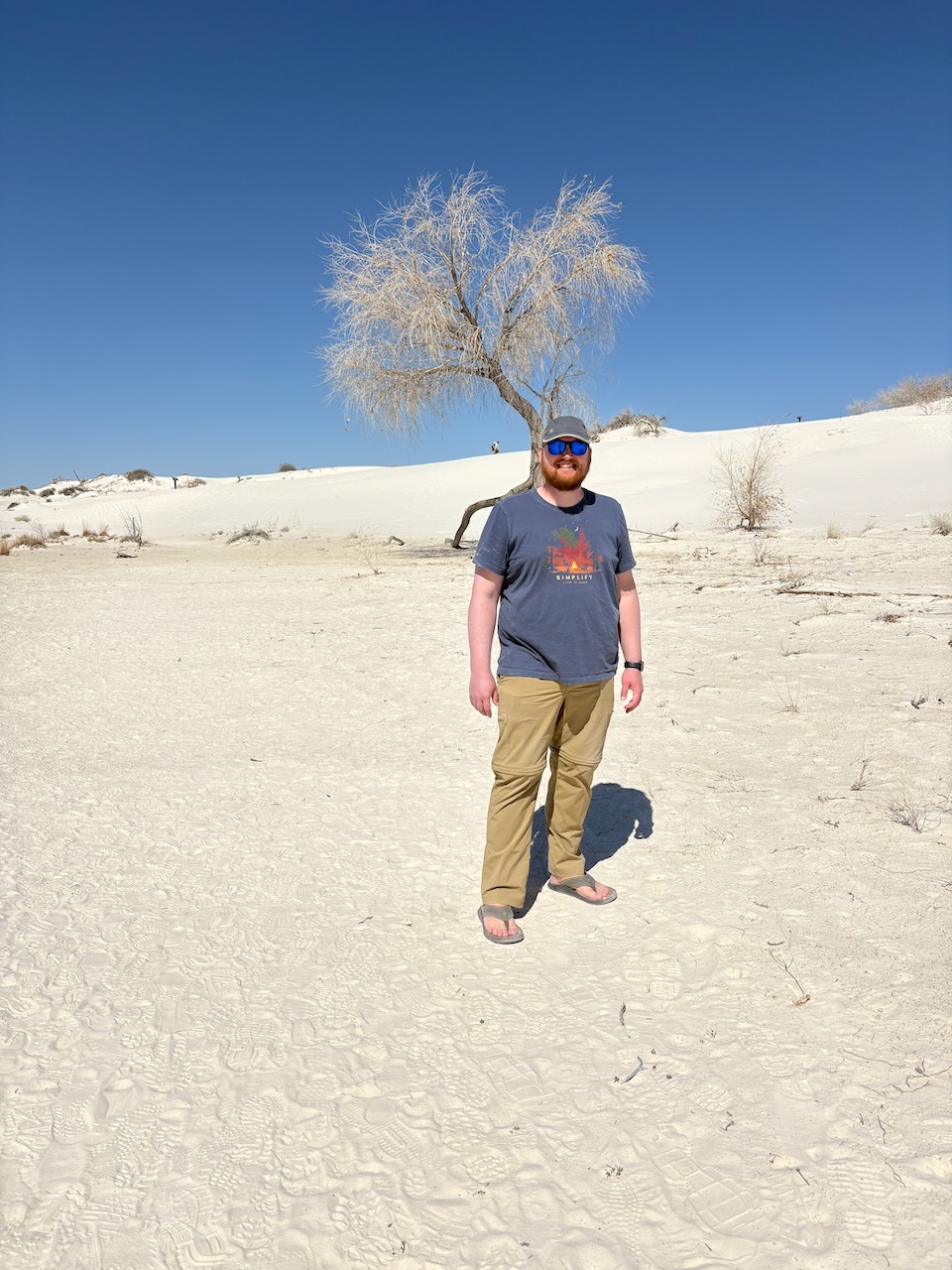
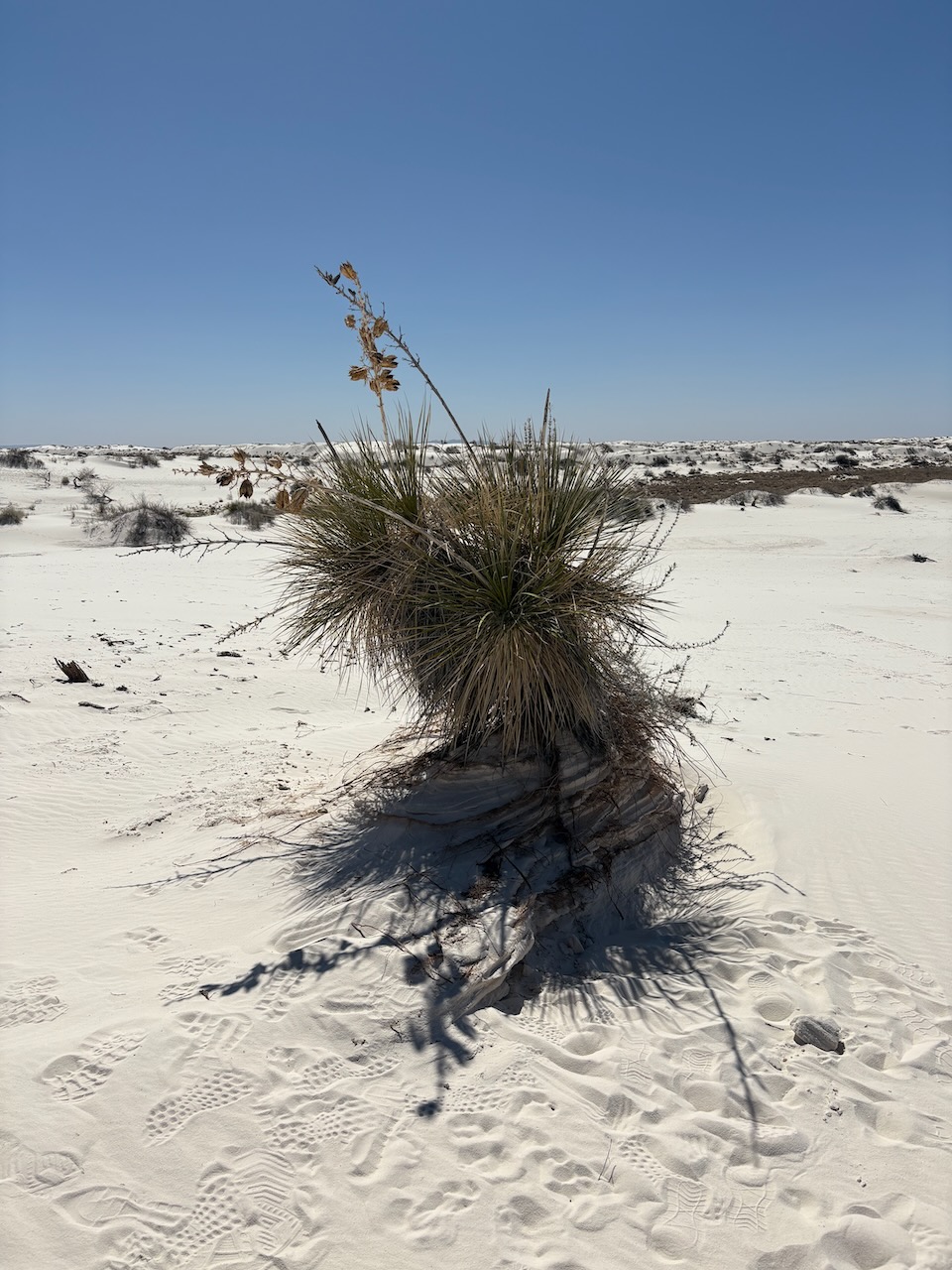
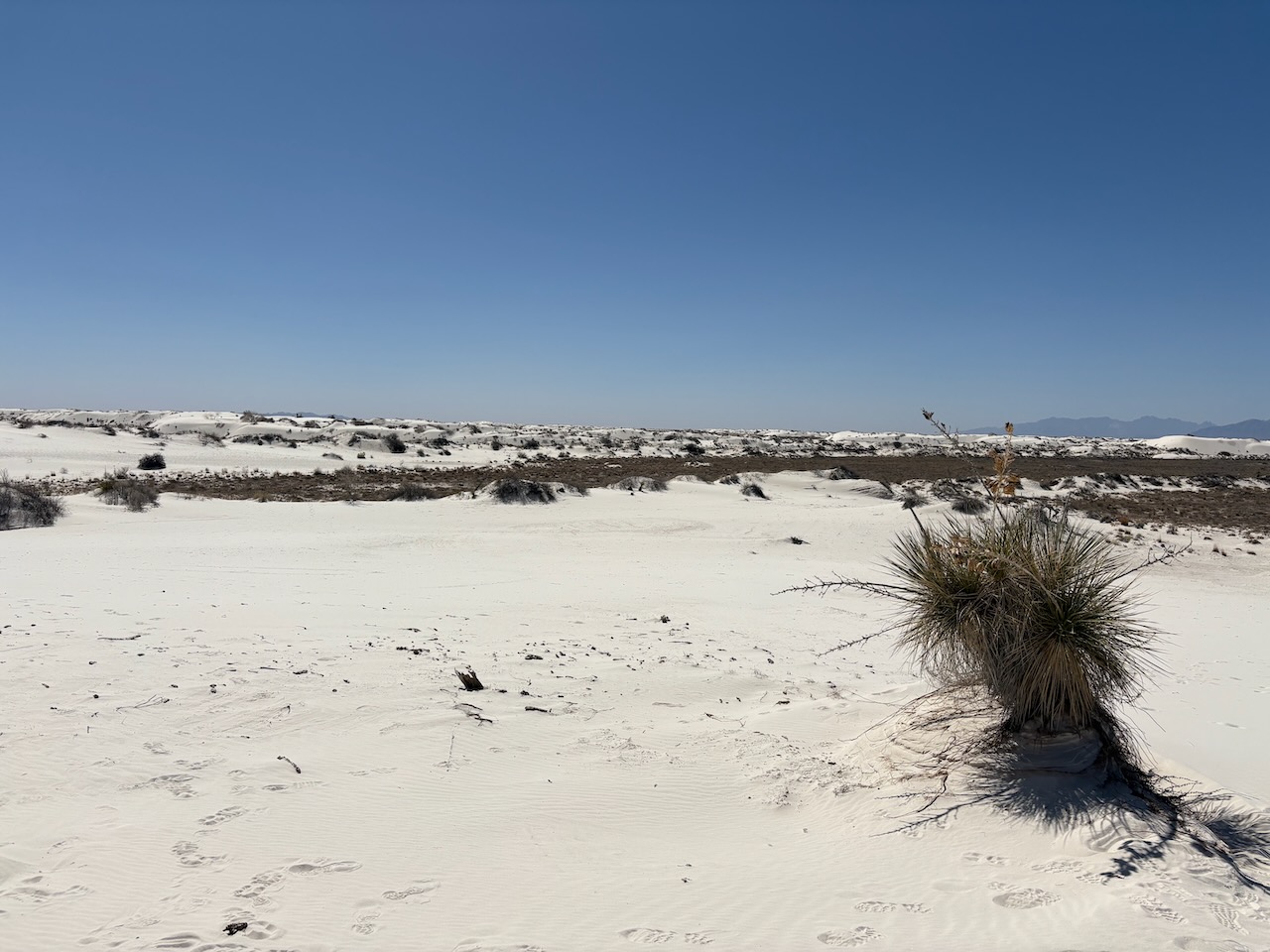
To finish out the day, we went to a guided hike with a park ranger near sunset. She was very informative and told us how the dunes supported plant life despite being just sand. It turns out that the water table is really high in this desert, just 24 inches below the surface. The gypsum in the sand binds with the water and creates firm ground for the plants to take root and for the dunes to grow upon.
 Eating Gypsum
Eating GypsumYou may have enjoyed a nice IPA beer to finish out your day. To bring out the hoppy flavors, gypsum is added to the beer. In fact, between beer, toothpaste, enriched flour, ice cream, and other foods, you are likely to consume 28 pounds of Gypsum over your lifetime!
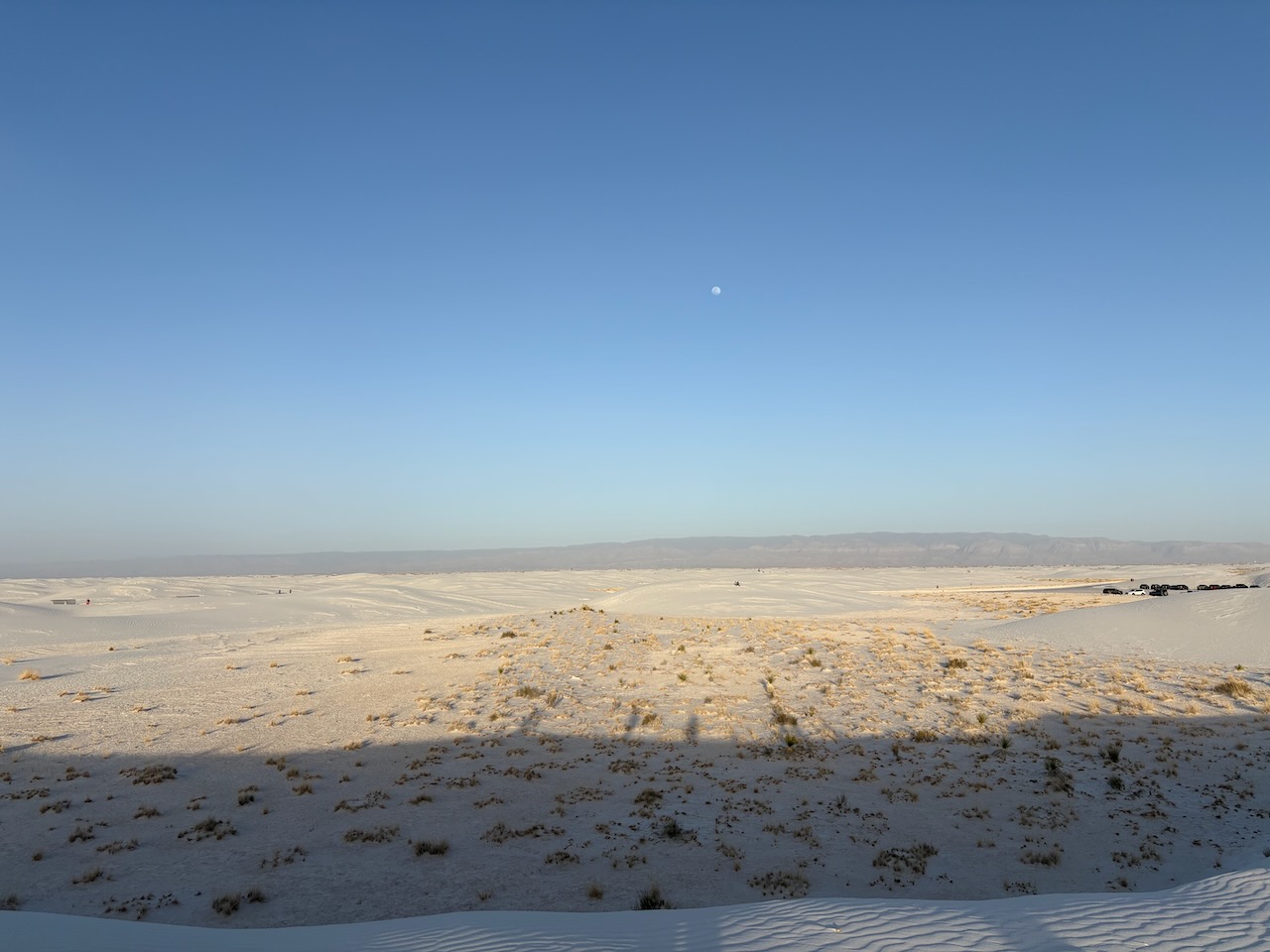
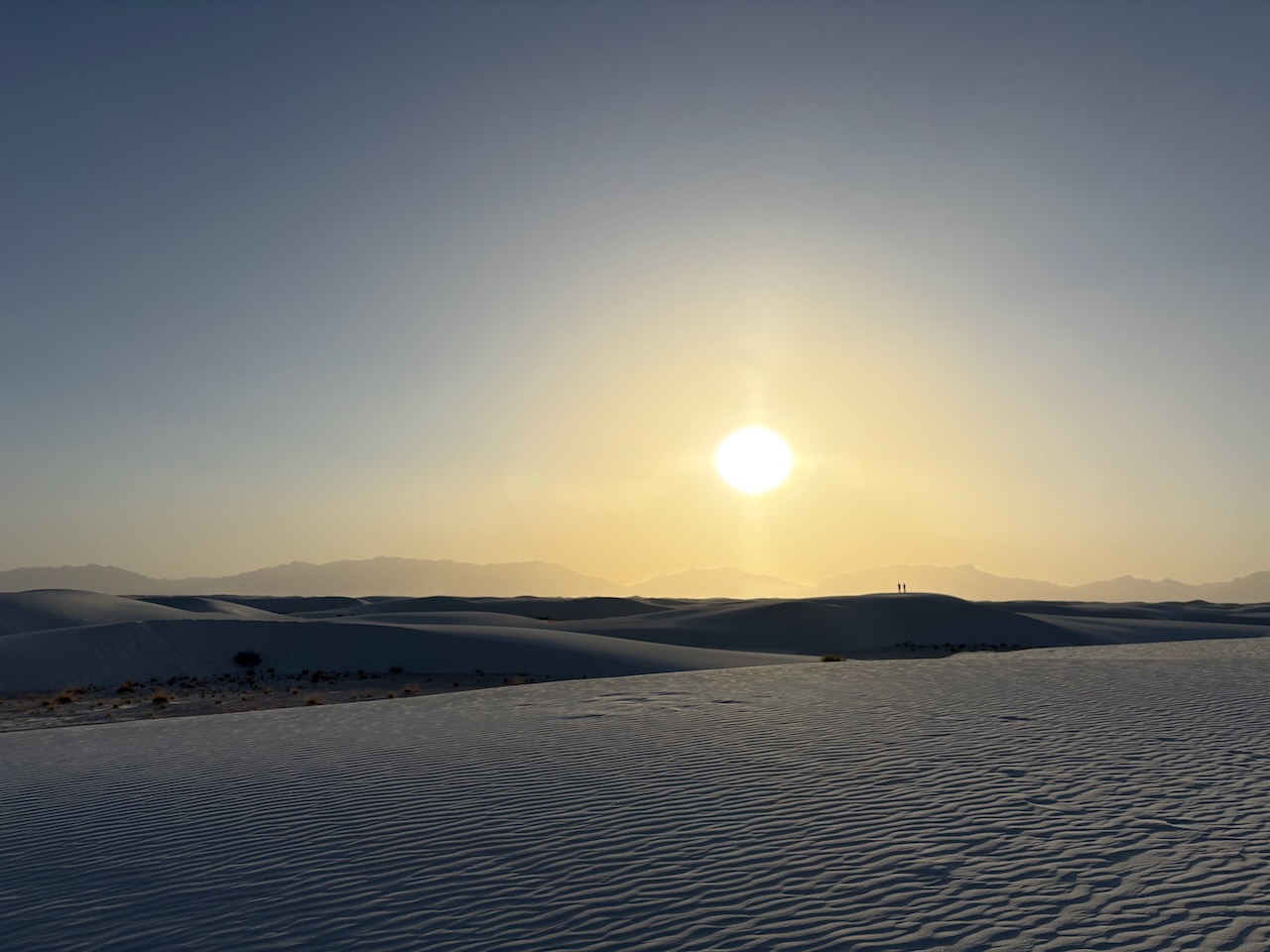
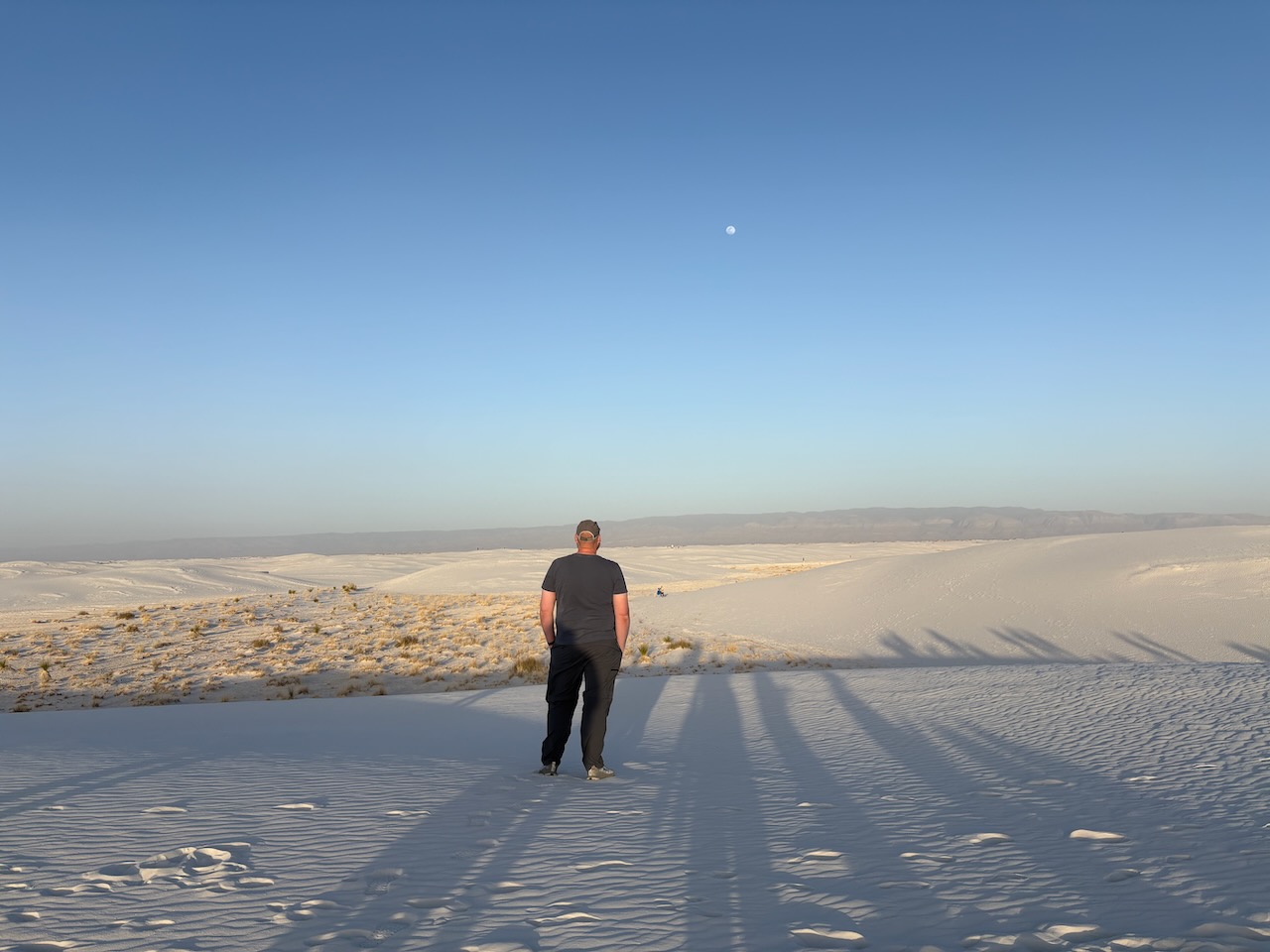

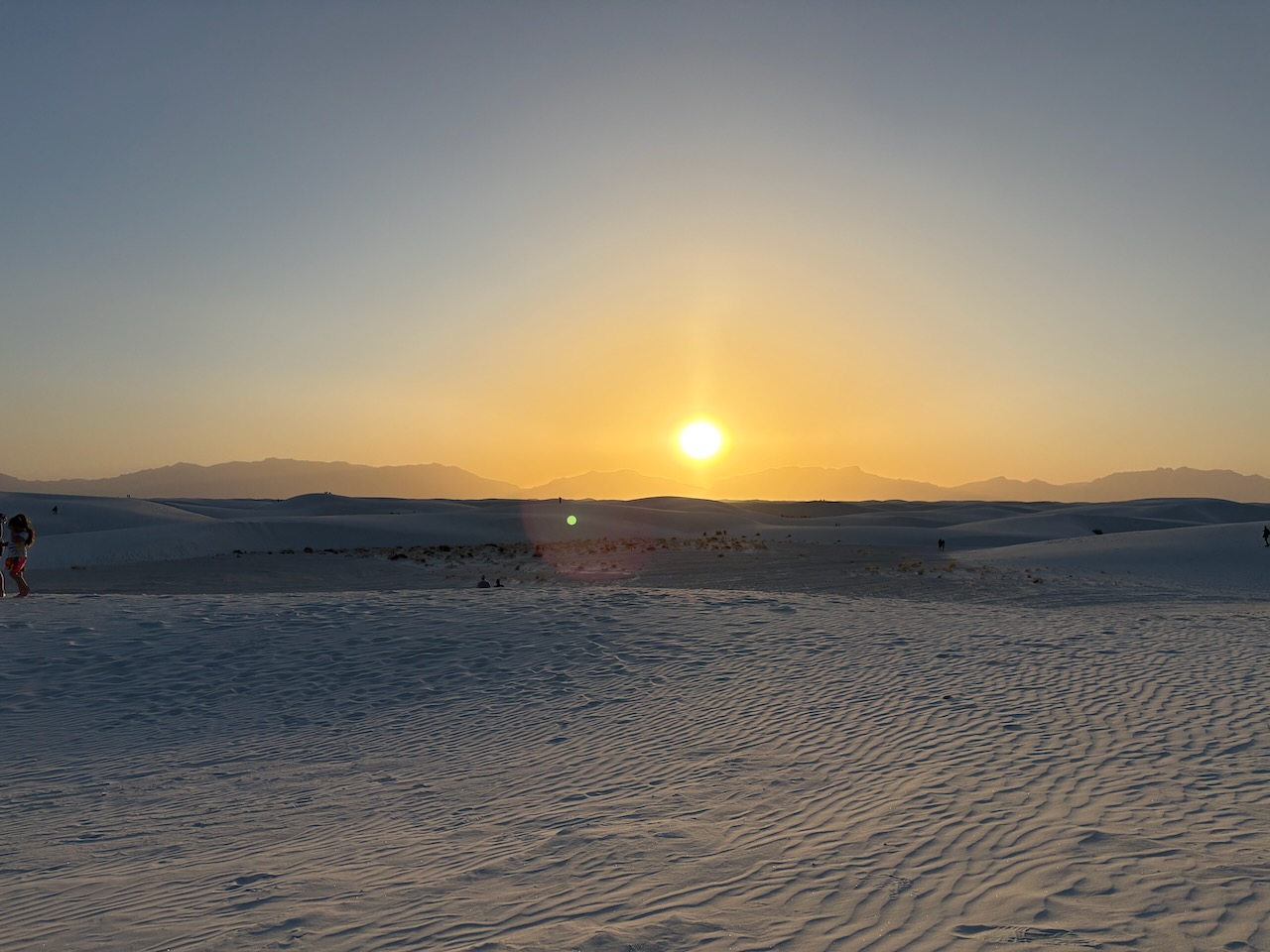
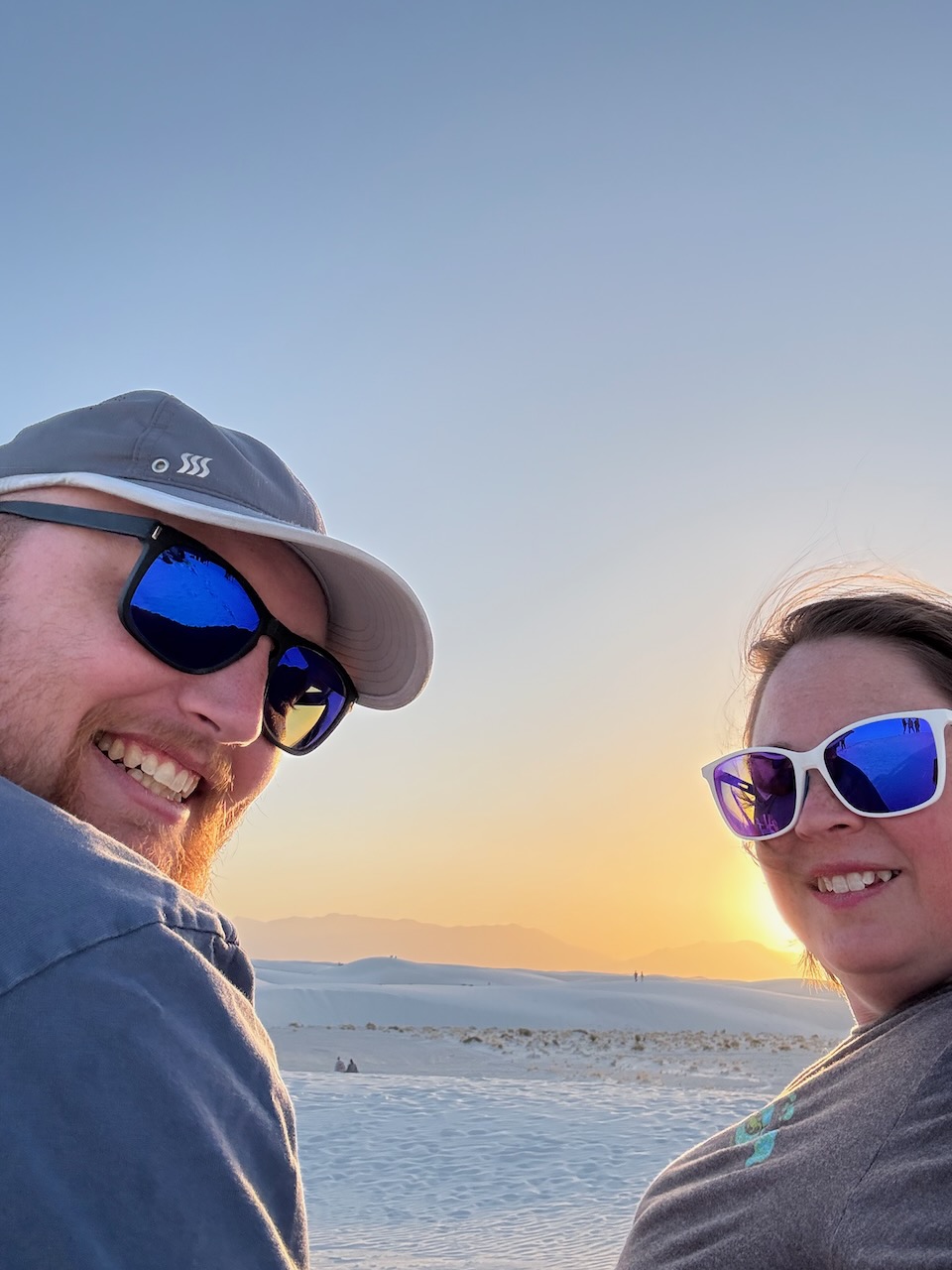
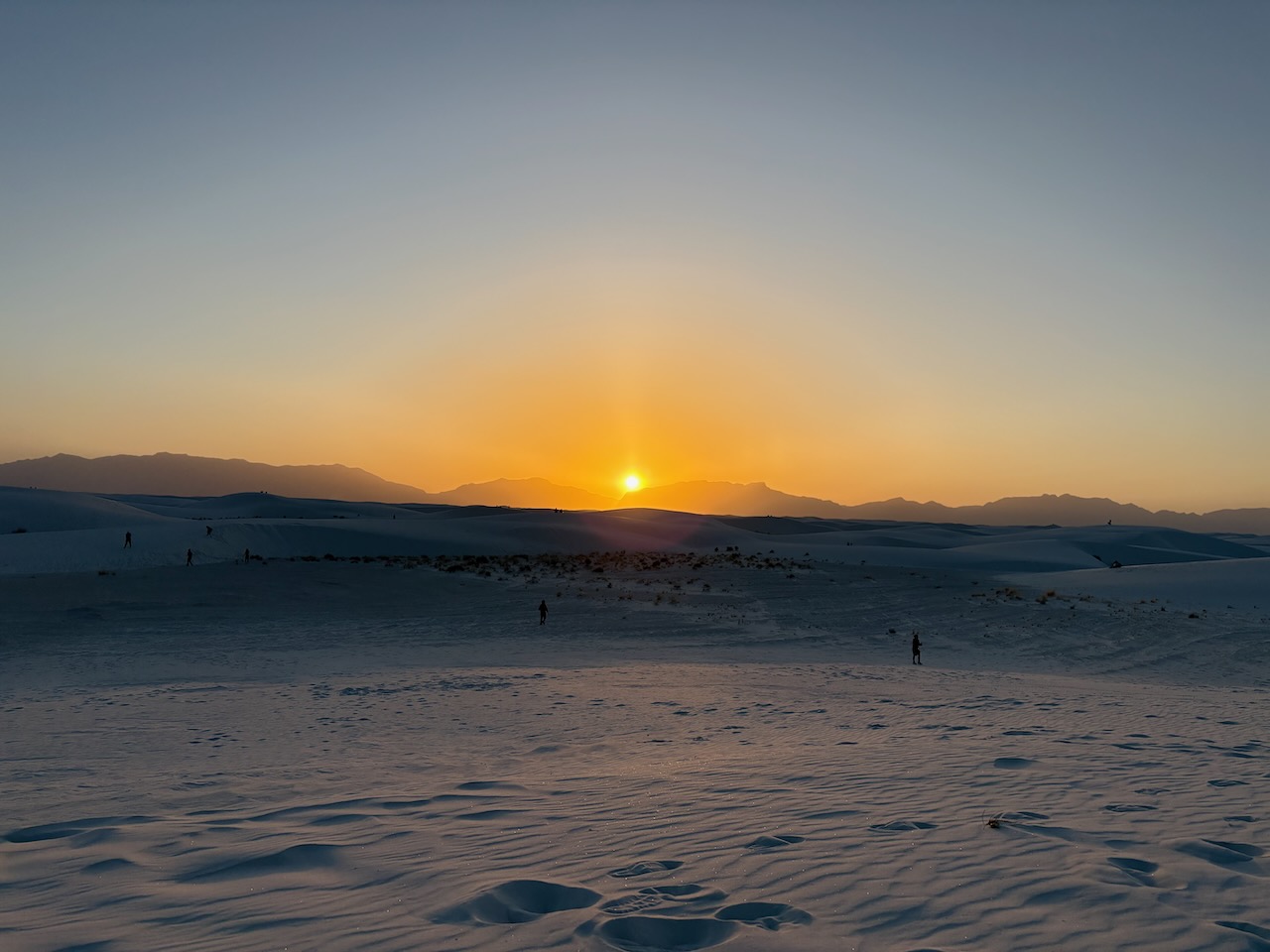
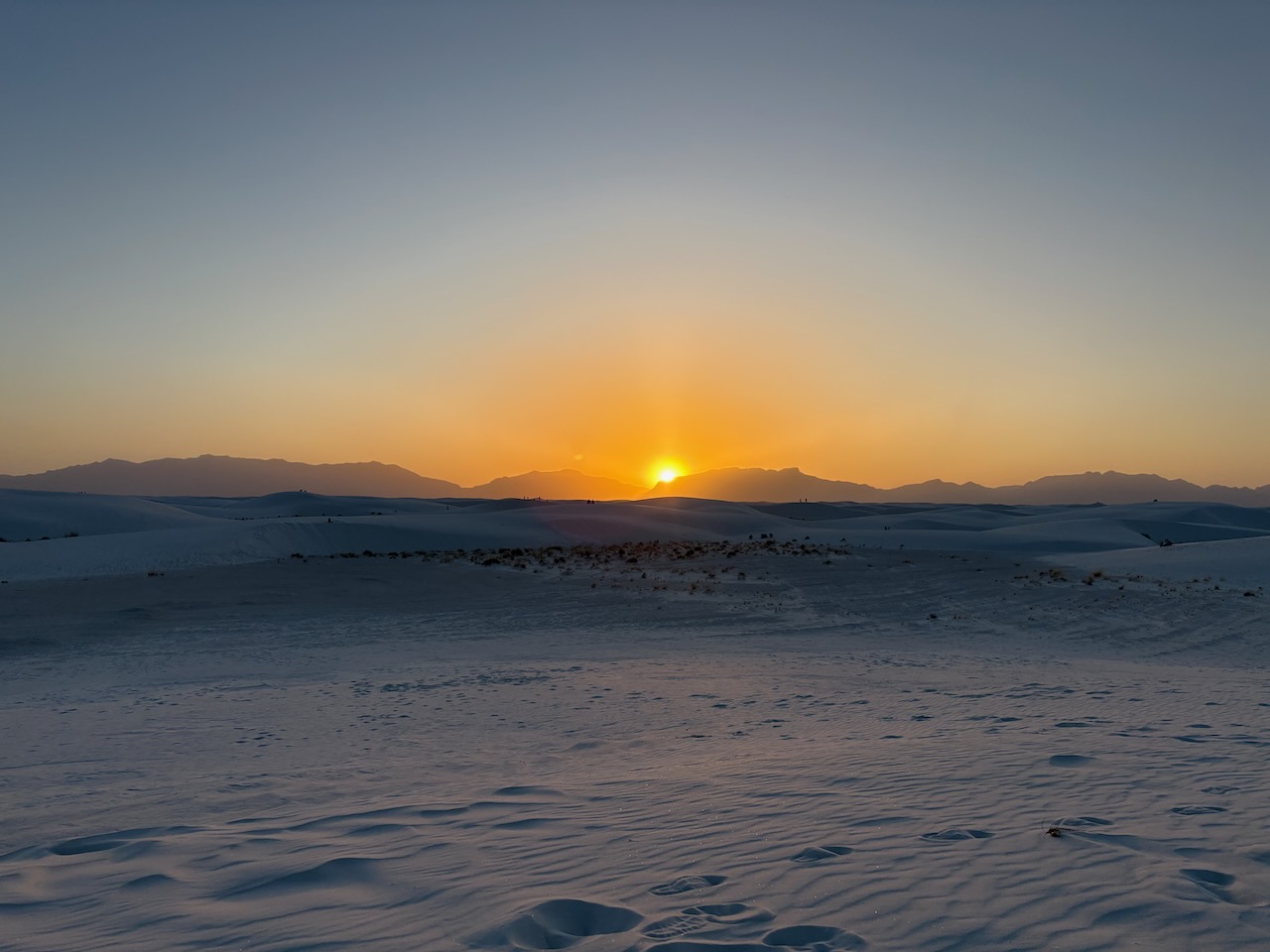
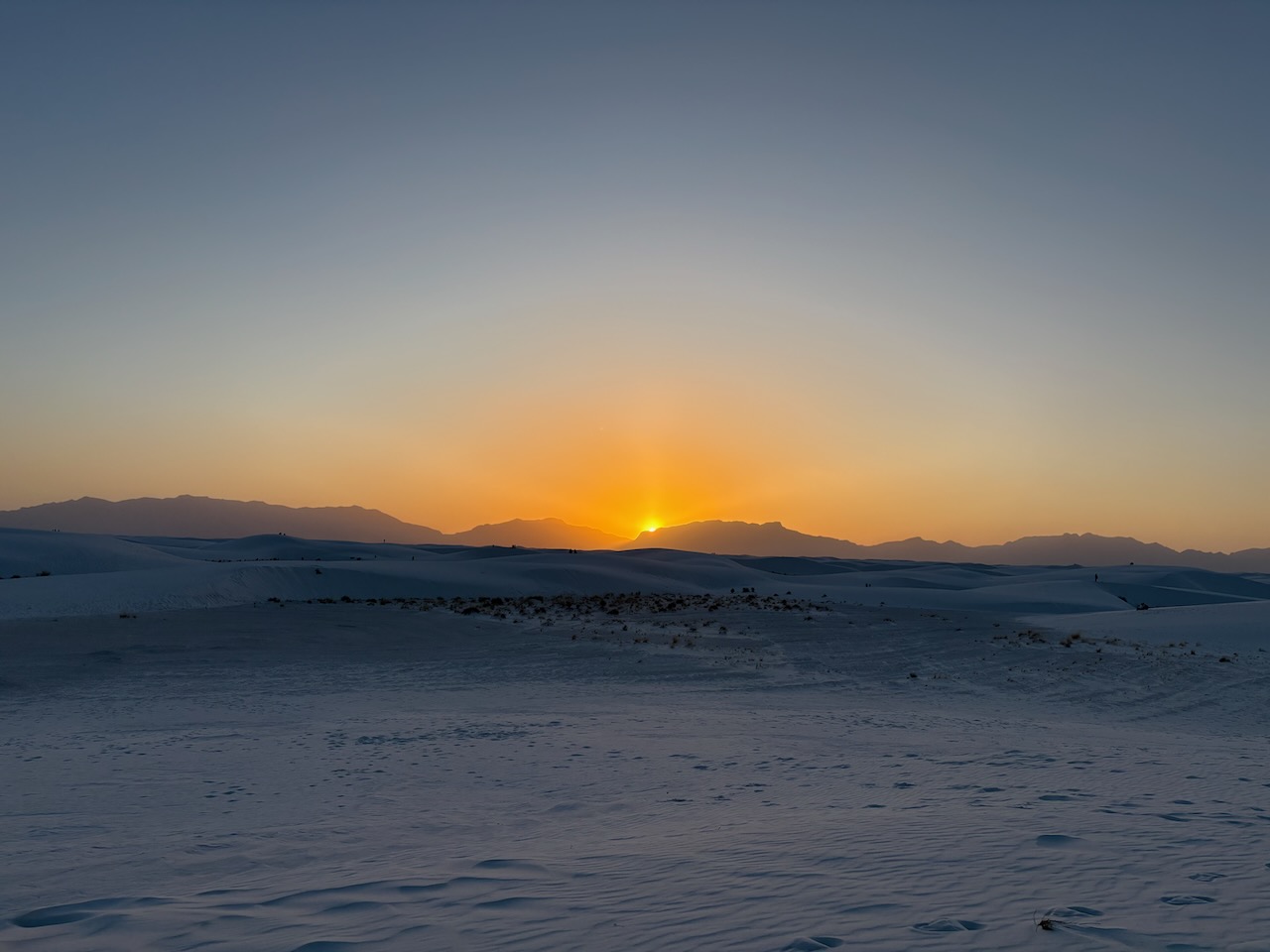
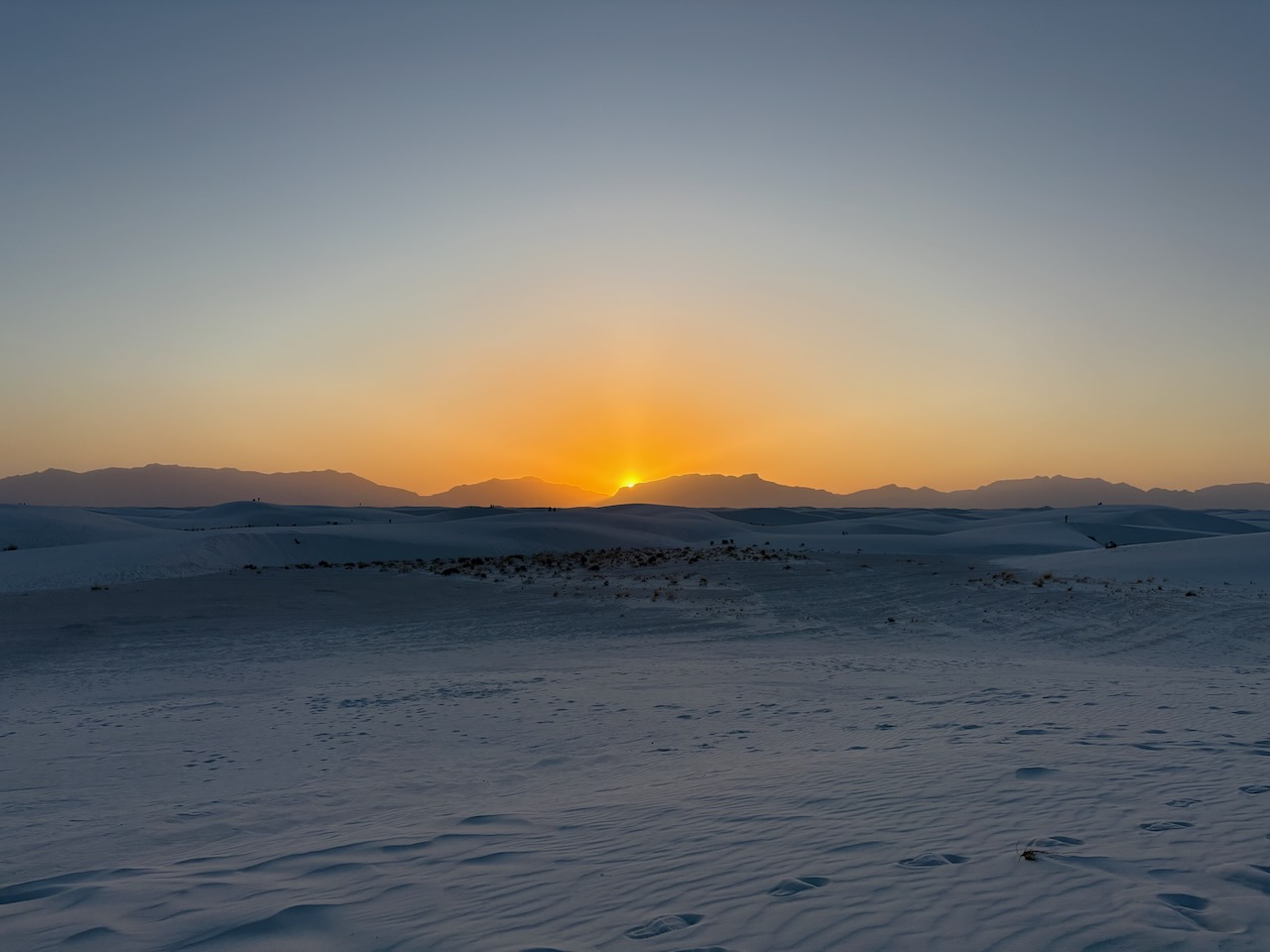

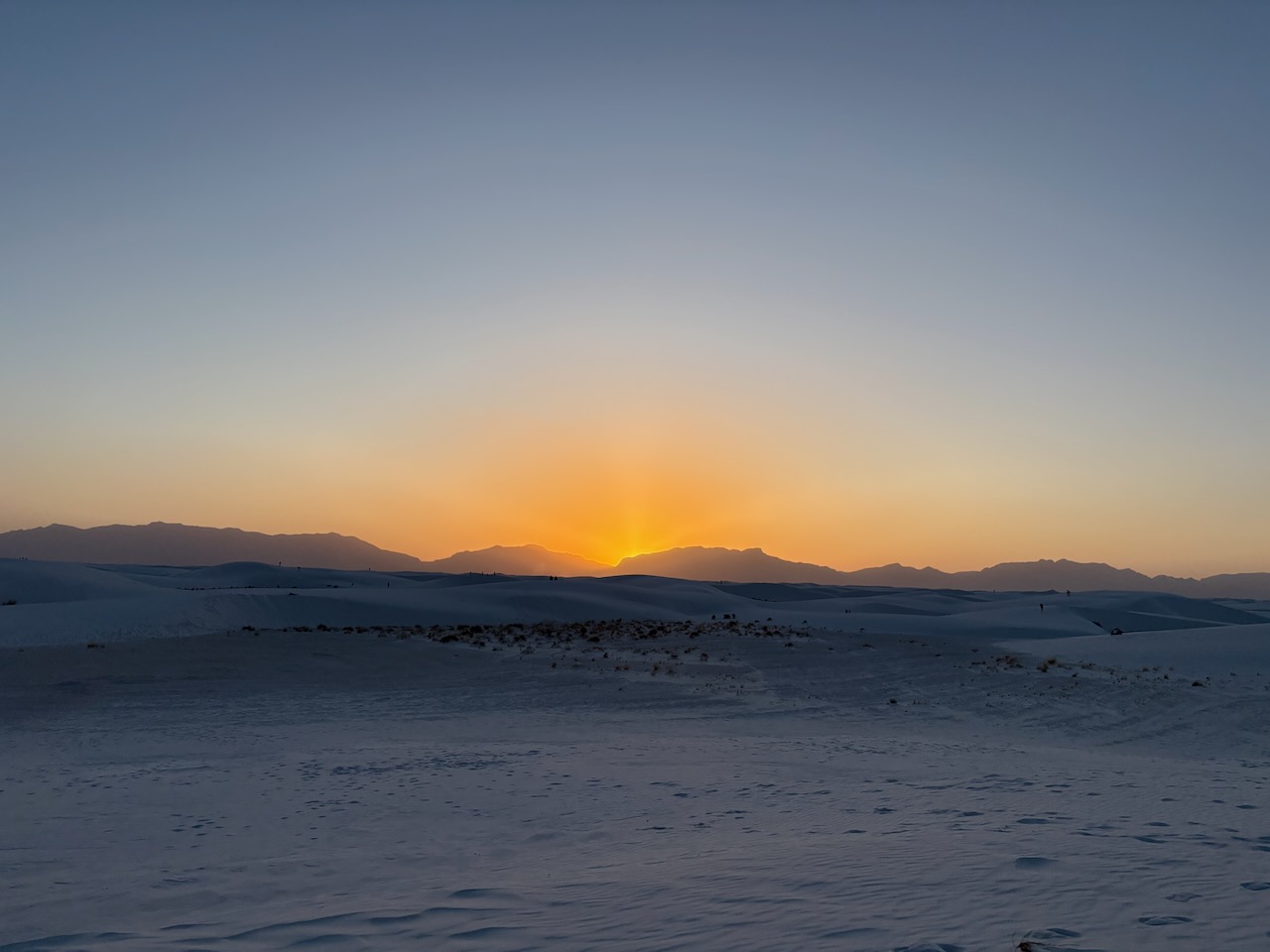
In the morning we started heading eastward again. We spied some locked up turtles when returning out hotel keys.
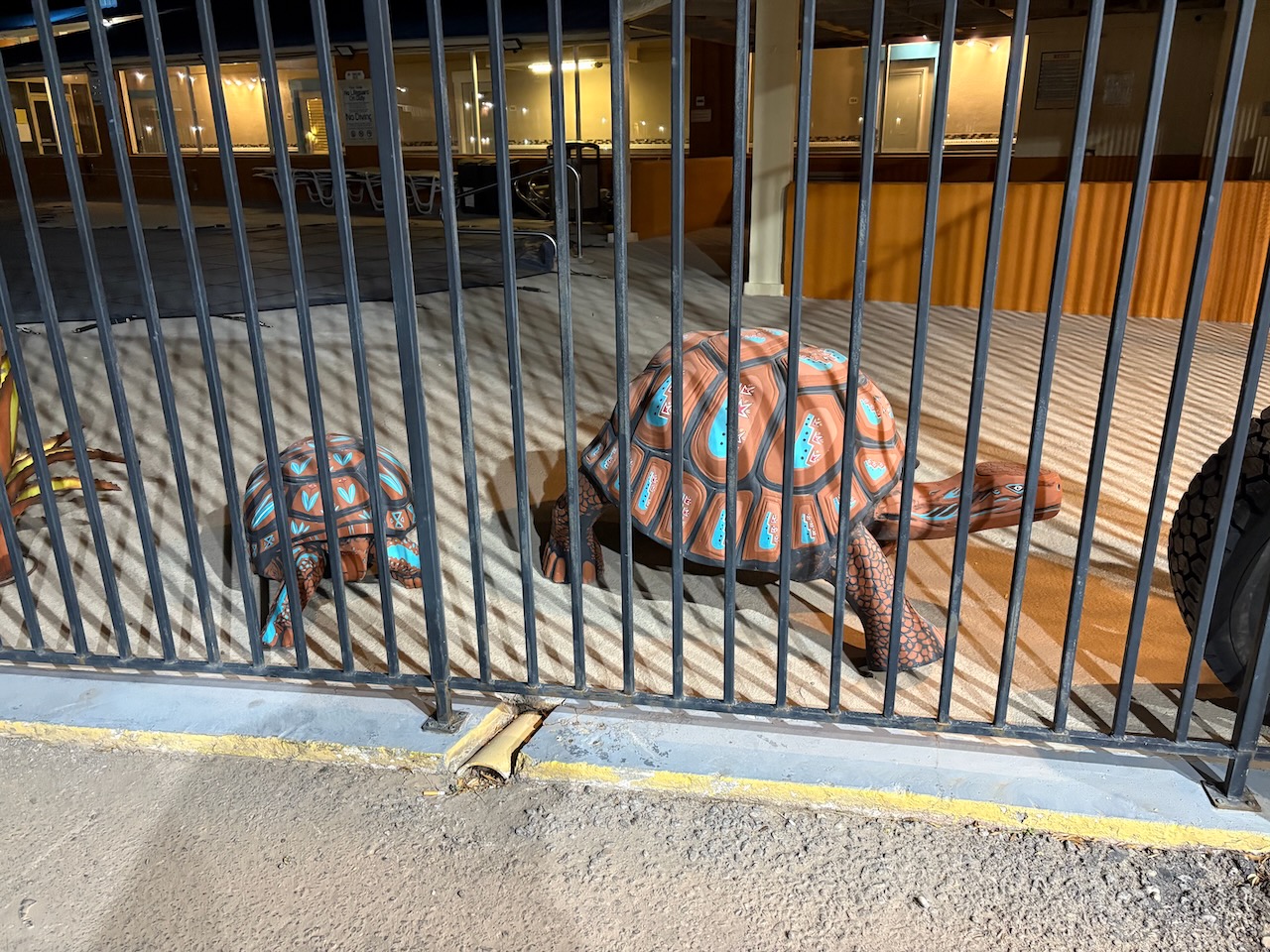
We were heading east and had a brief encounter with a forest up in the mountains, but it's back to more desert for a
little while longer.
